Small living rooms present unique opportunities to create cozy, functional spaces through thoughtful sectional placement. The key lies in understanding how different configurations can transform your space from cramped to comfortable. Whether you have a narrow apartment, studio setting, or compact family room, the right sectional layout maximizes both seating and style. Modern sectionals offer incredible versatility through modular designs, reversible chaises, and compact footprints that work beautifully in tight quarters. These versatile pieces can anchor your space, define zones, or create intimate conversation areas without overwhelming the room. Smart placement techniques like corner positioning, floating arrangements, and wall-hugging configurations help optimize traffic flow while ensuring every square foot serves a purpose. From L-shaped classics to innovative modular systems, sectional layouts adapt to your lifestyle needs while maintaining visual appeal and comfort.
1. Corner L-Shape Sectional Layout
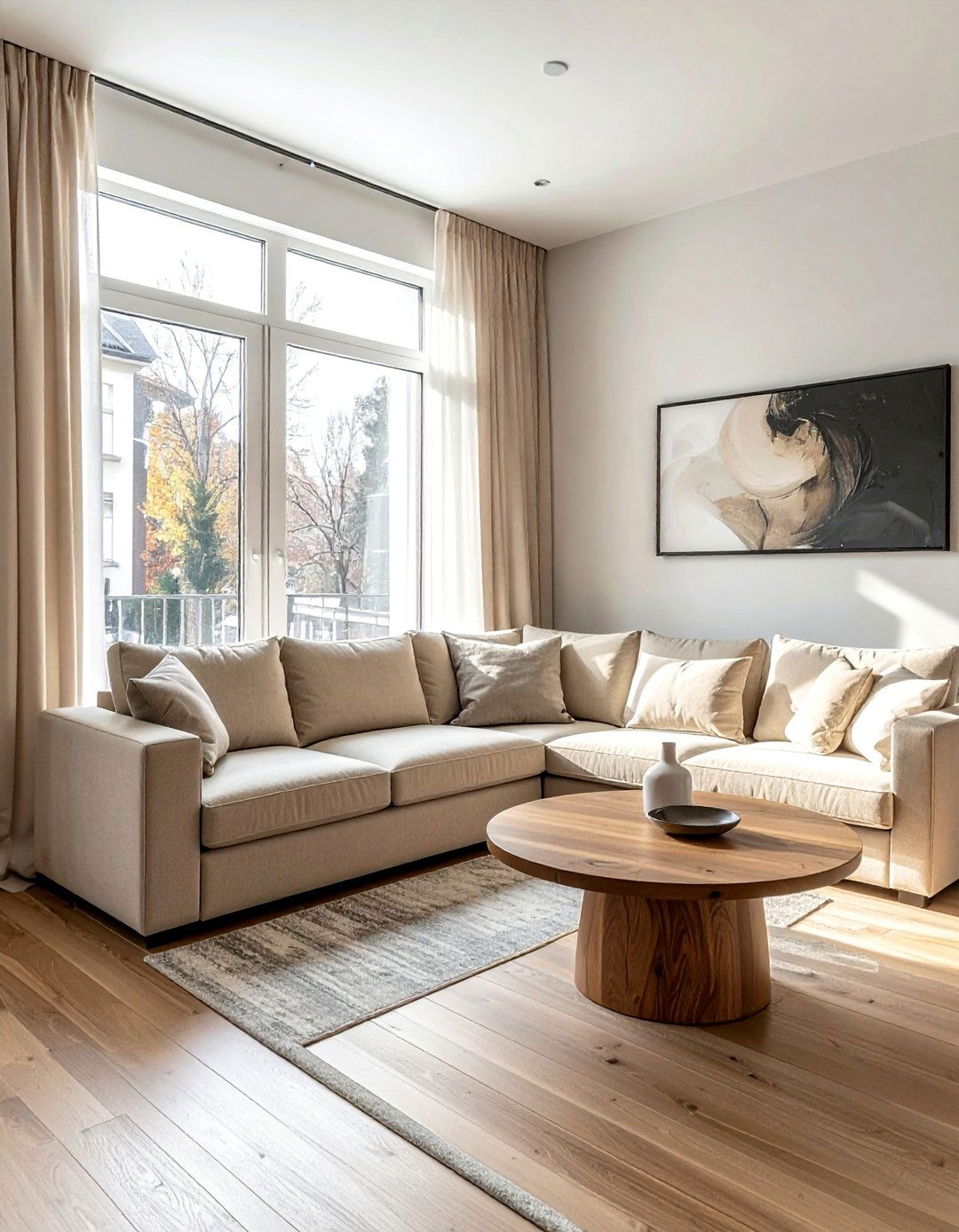
The corner L-shaped layout remains the most popular choice for small living rooms. Position your sectional snugly in the corner where two walls meet, creating maximum floor space in the center of the room. This arrangement works particularly well when facing a fireplace or television mounted on the opposite wall. The corner placement keeps traffic flow smooth while providing ample seating for families. Choose sectionals with lower backs to maintain an open feel, and add a round coffee table to soften the angular lines. This layout accommodates intimate gatherings while leaving room for additional accent chairs when needed. Consider sectionals with built-in storage in the chaise portion to maximize functionality without sacrificing style.
2. Floating Sectional Room Divider
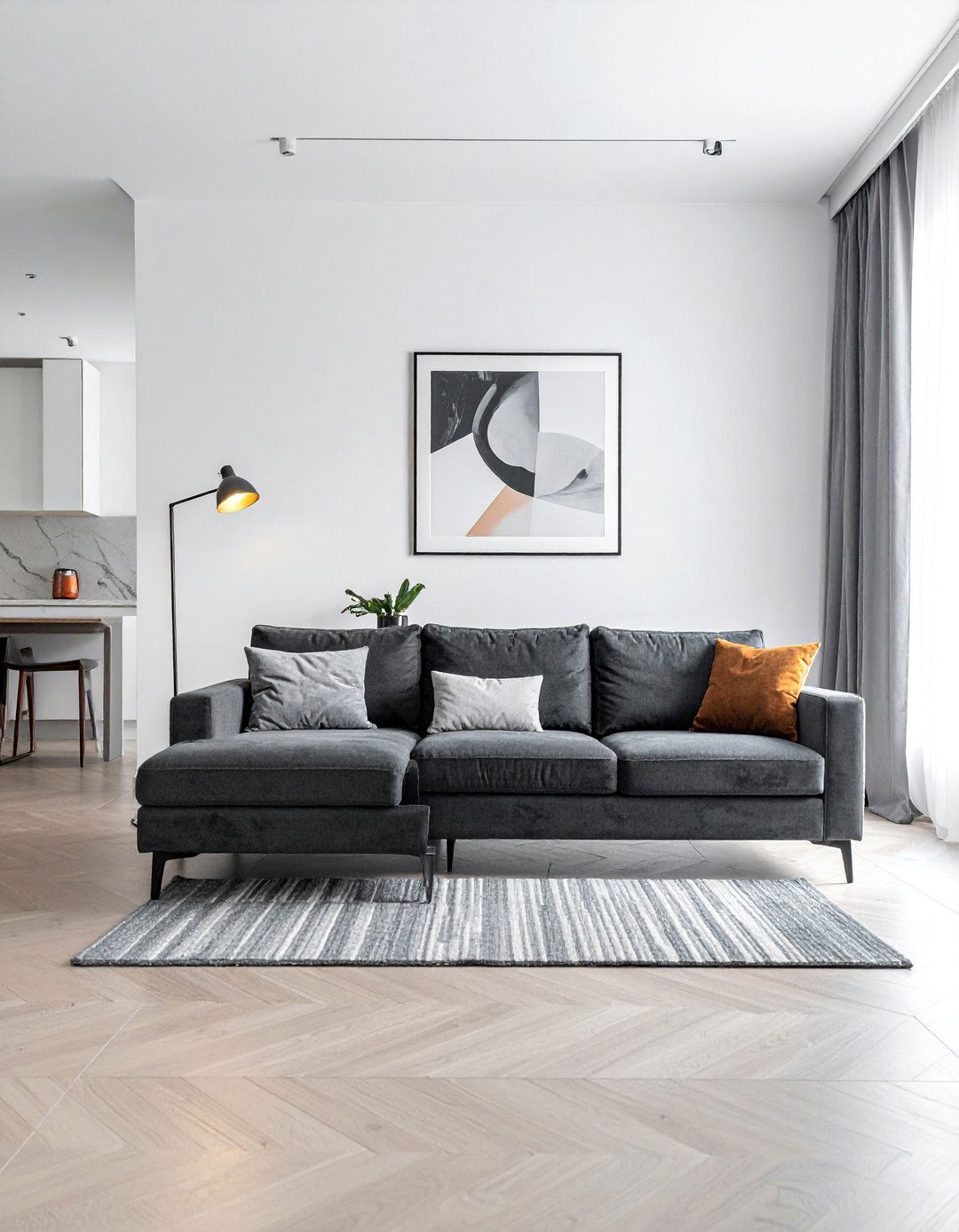
Float your sectional in the center of an open-concept space to define distinct living zones. This bold approach works especially well in studio apartments or combined living-dining areas where you need to create separation without walls. Position the sectional so its back faces the kitchen or dining area, creating a natural boundary while maintaining visual flow. Add a console table behind the sectional for extra storage and display space. The floating layout makes your small space feel larger by avoiding the cramped feeling that comes from pushing all furniture against walls. This arrangement encourages conversation and creates an intimate seating area that feels separate from other activities.
3. Window-Adjacent Sectional Placement
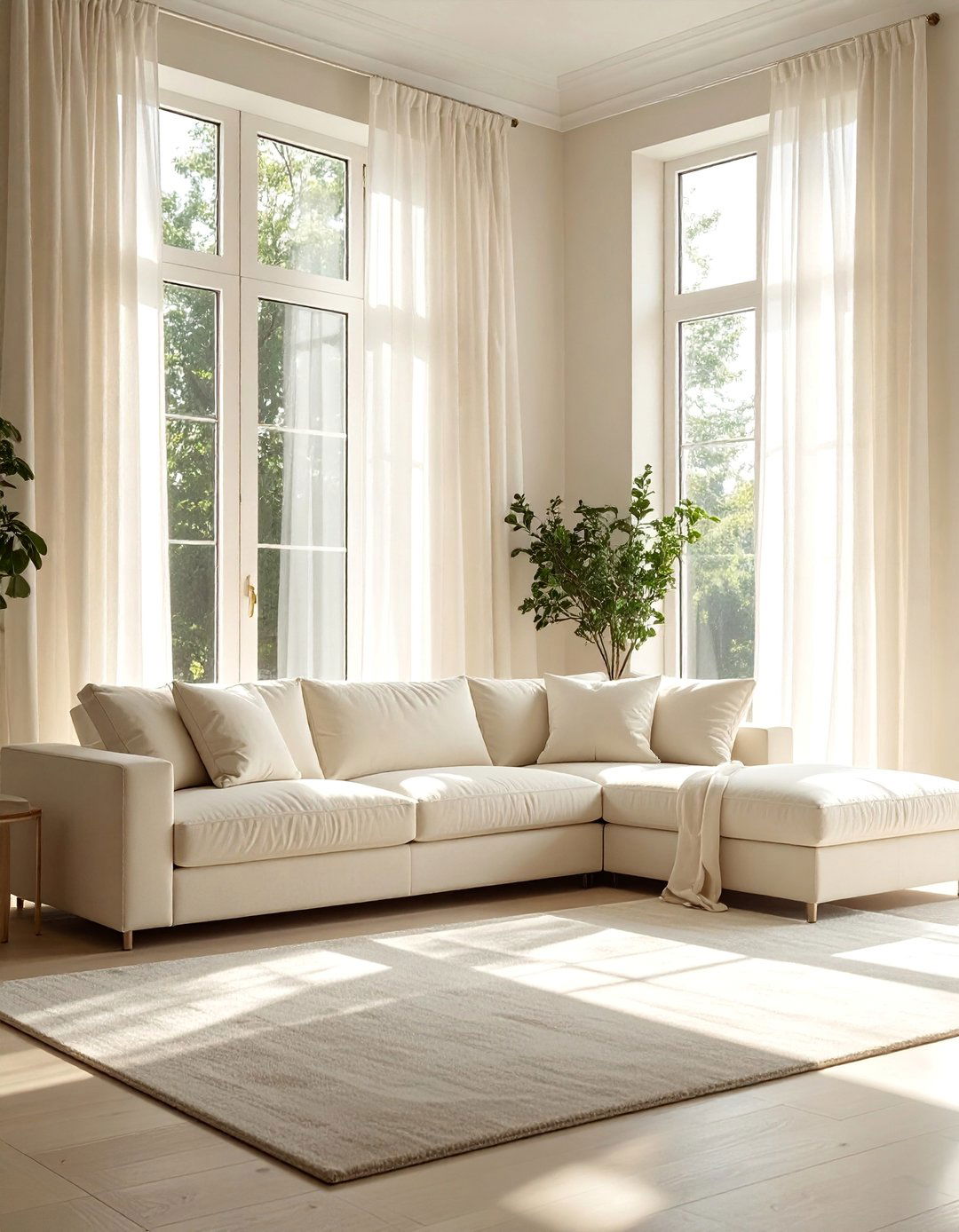
Maximize natural light by placing your sectional adjacent to large windows rather than blocking them entirely. This layout brings the outdoors in while creating a bright, airy atmosphere that makes small spaces feel more expansive. Position the sectional perpendicular to the window wall, allowing light to flow freely across the room. The arrangement works beautifully for morning coffee routines or afternoon reading sessions with abundant natural lighting. Add sheer curtains to control glare while maintaining the open feel. This placement also provides stunning views from your seating area, making the space feel connected to the outside environment while keeping the room feeling fresh and spacious.
4. Modular Sectional Flexibility
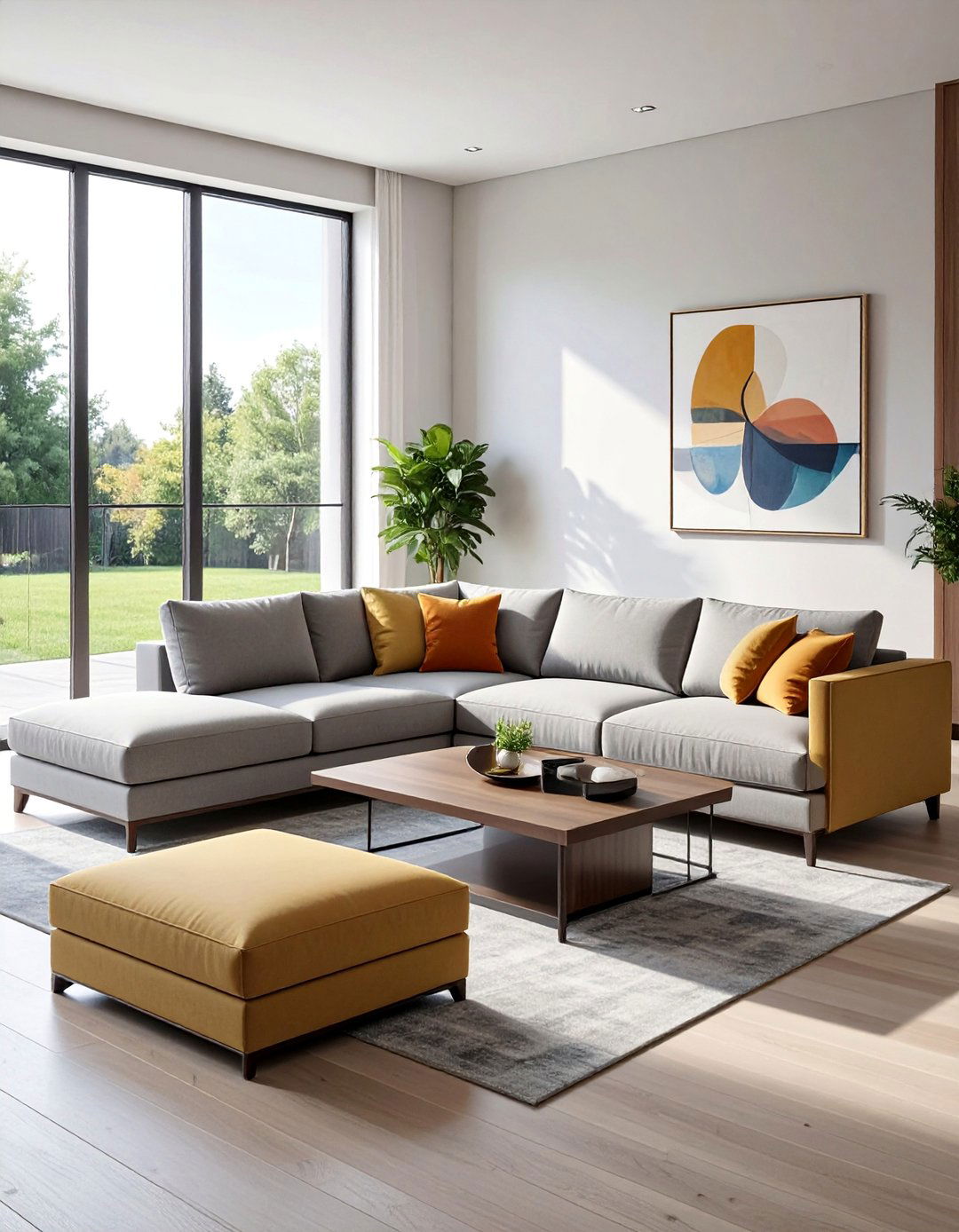
Embrace the versatility of modular sectionals that adapt to your changing needs and space constraints. These systems allow you to reconfigure pieces based on different occasions, from intimate movie nights to larger gatherings. Start with a basic L-shape and add or remove modules as needed. Can you imagine the convenience of rearranging your seating for different seasons or activities? Modular designs often include ottomans that serve triple duty as seating, footrests, and storage. The flexibility makes these sectionals perfect for renters who might move frequently. Choose pieces with universal connectors that lock securely but separate easily, ensuring your investment adapts to future living situations while maintaining comfort and style.
5. Chaise Sectional with Reversible Options
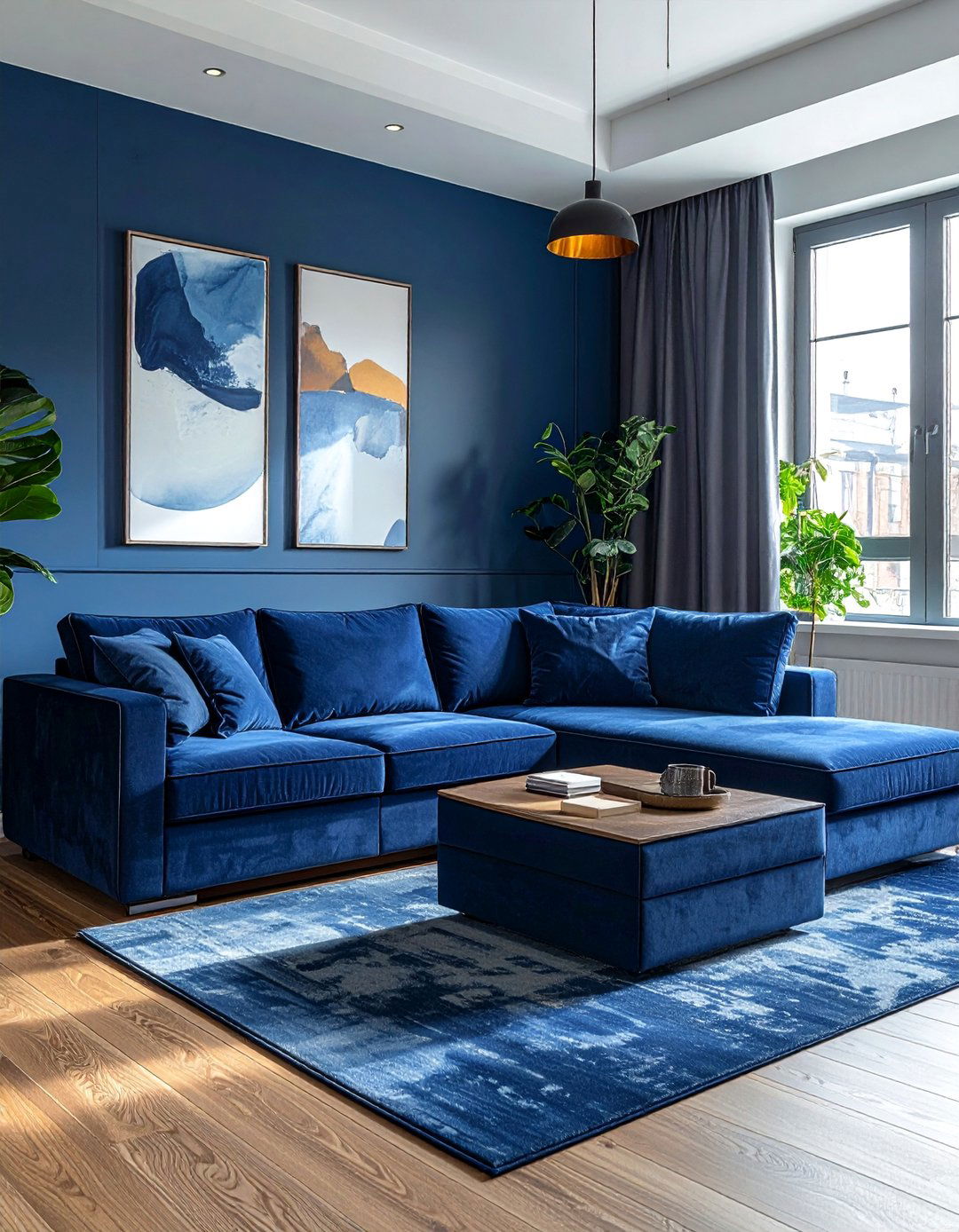
Reversible chaise sectionals offer unmatched flexibility in small living rooms where furniture placement might need to change. The chaise component can switch sides depending on your room layout, traffic patterns, or personal preference. This adaptability proves invaluable when rearranging for different seasons or life changes. Position the chaise toward the room's center for lounging or against a wall for space-saving. The reversible feature means you can optimize placement based on lighting conditions or entertainment setup changes. These sectionals often include modular ottomans that complement the chaise, creating even more lounging options. The versatility ensures your sectional remains functional regardless of how your small space evolves over time.
6. Narrow Living Room Alignment
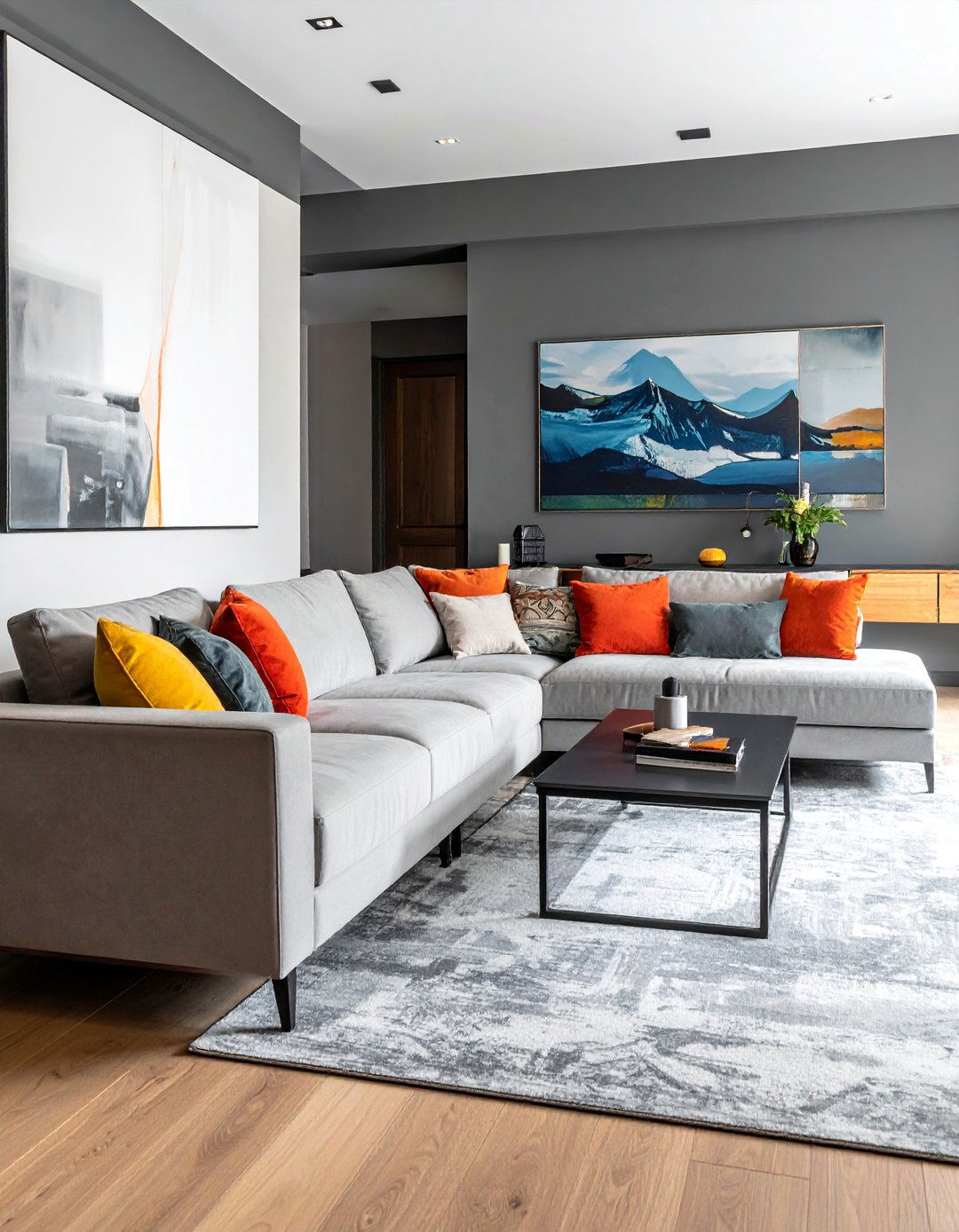
Long, narrow living rooms benefit from sectionals placed along the longest wall to emphasize the space's natural flow. This alignment creates a clean sight line while maximizing seating without blocking pathways. Choose sectionals with lower profiles to avoid overwhelming the vertical space, and complement with narrow coffee tables that don't interrupt movement. The longitudinal placement makes the room feel more balanced and less tunnel-like. Add mirrors on the opposite wall to create the illusion of width and reflect light throughout the space. This layout works particularly well in apartment corridors or converted spaces where width is limited but length provides opportunities for creative furniture arrangement.
7. U-Shape Sectional for Maximum Seating
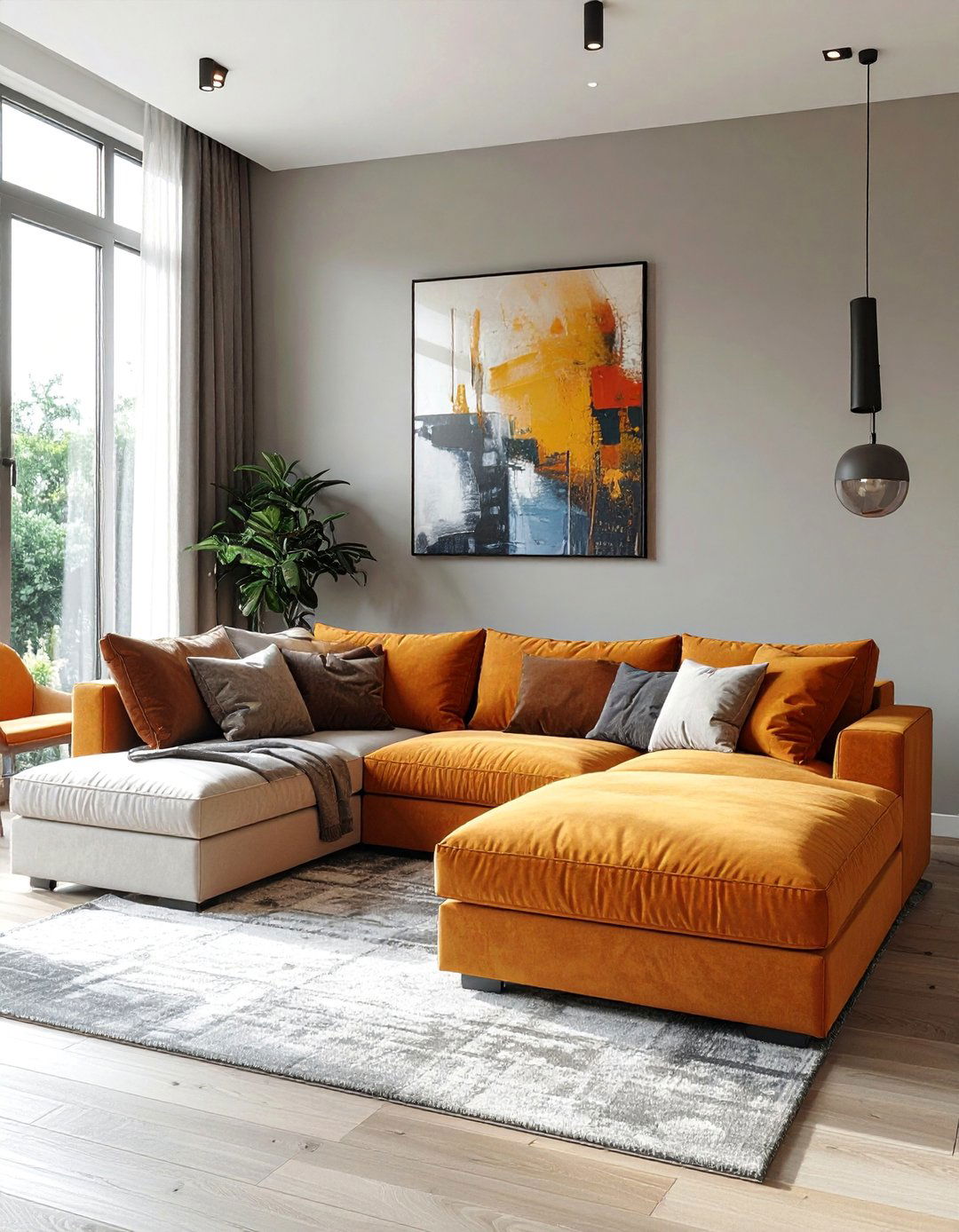
U-shaped sectionals create intimate conversation pits perfect for families who prioritize togetherness in small spaces. While seemingly large, these configurations often use space more efficiently than separate furniture pieces. Position the U-shape to face your main focal point, whether a television, fireplace, or large window with a view. The enclosed feeling promotes conversation and creates a cozy atmosphere that makes small rooms feel intentionally intimate rather than cramped. Choose sectionals with different depths on each arm to add visual interest and accommodate various seating preferences. Add a large ottoman in the center for extra seating and to complete the conversation circle while providing storage for blankets and games.
8. Sectional with Built-in Storage Solutions
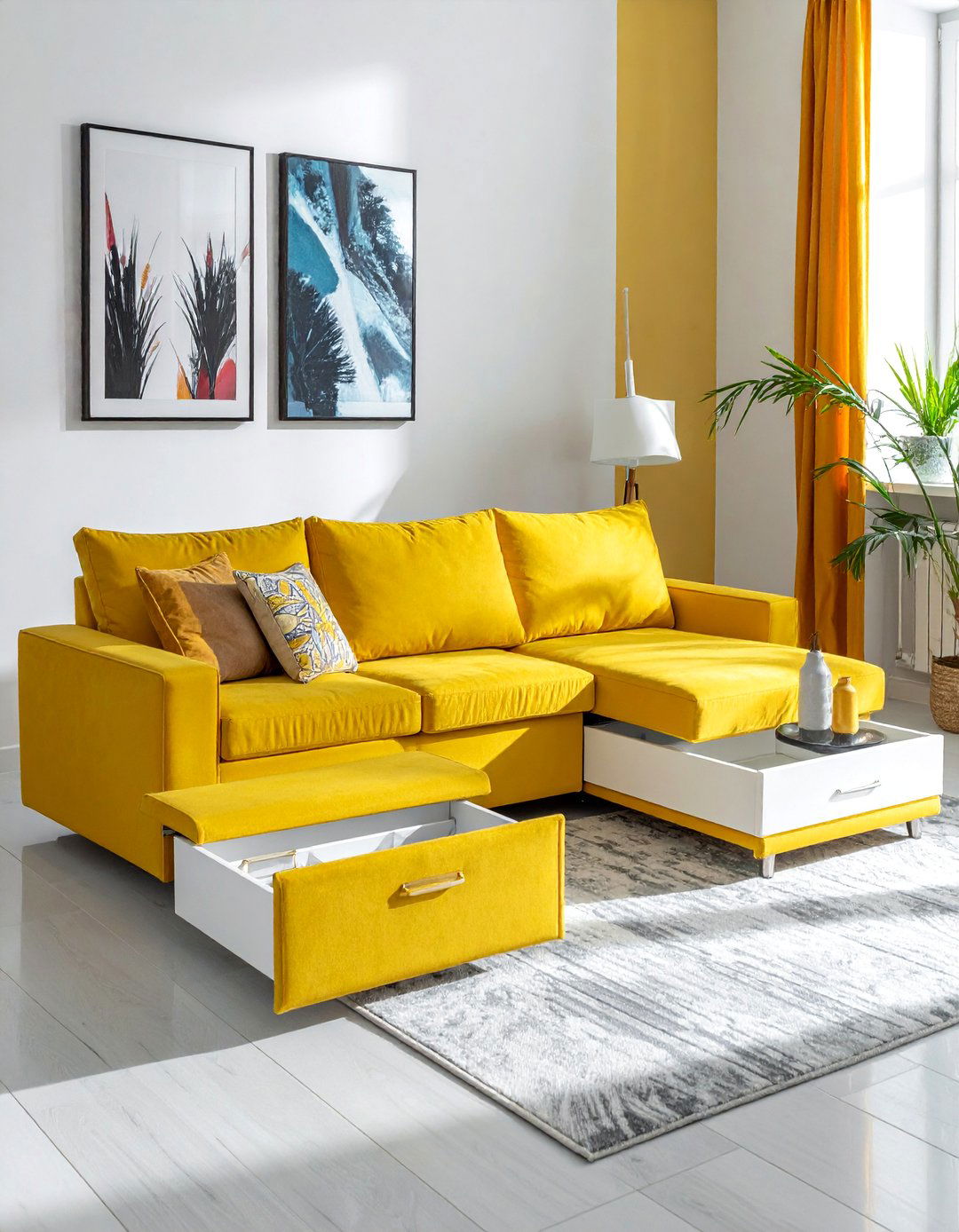
Storage sectionals solve multiple challenges in small living rooms by combining seating with hidden compartment space. Chaise sections often feature lift-up tops perfect for storing throw blankets, pillows, board games, or seasonal items. Some designs include drawers underneath seats for organizing remotes, magazines, and everyday essentials. How convenient would it be to have everything within arm's reach while maintaining a clutter-free appearance? Position these multifunctional pieces strategically to replace additional storage furniture, freeing up valuable floor space. The hidden storage keeps your small living room organized while providing the comfort and style of a traditional sectional. Choose neutral upholstery to ensure the piece works with changing decor themes over time.
9. Apartment-Size Sectional Scaling
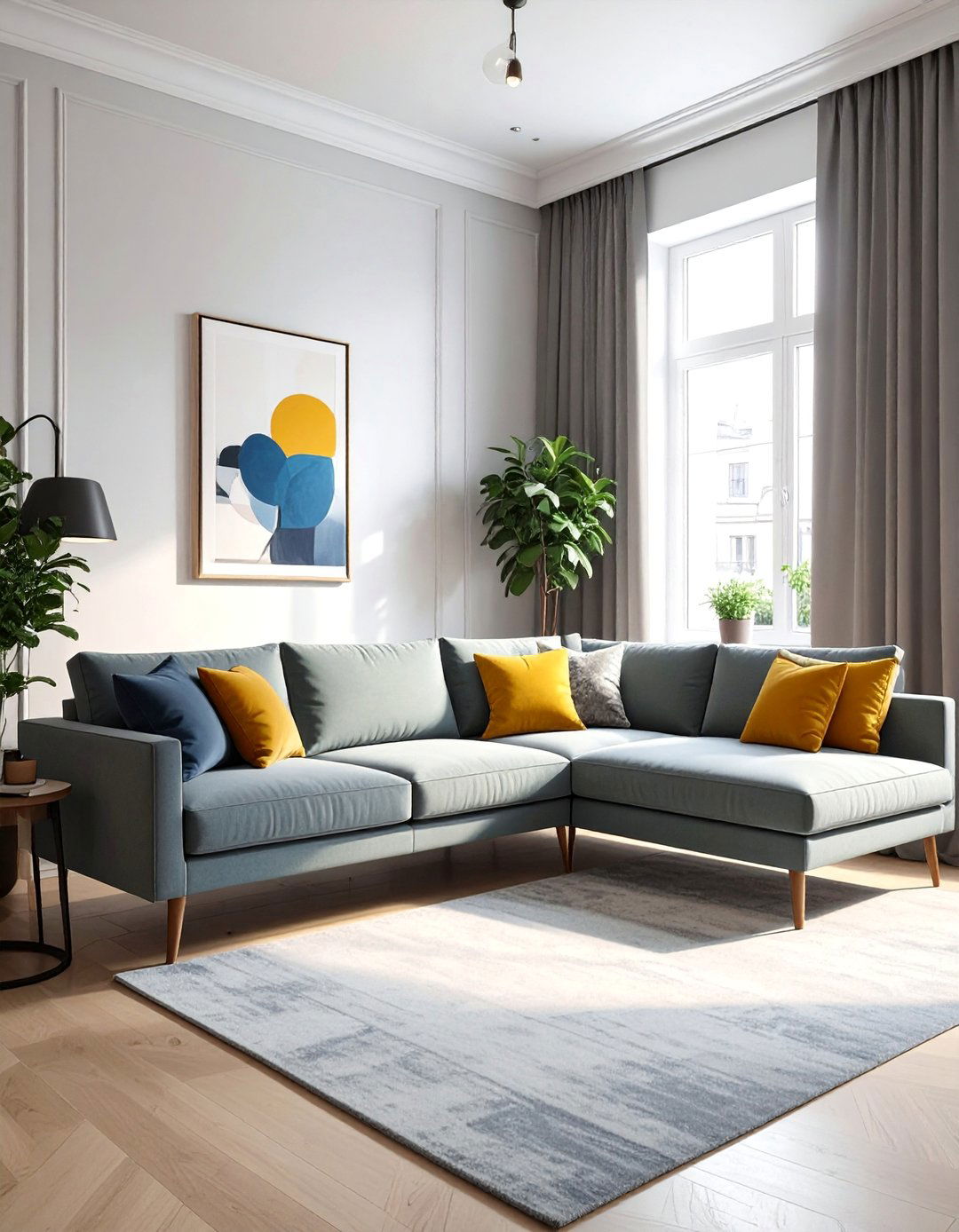
Apartment-size sectionals are specifically designed for small spaces without sacrificing comfort or style. These compact versions maintain proper proportions while fitting through narrow doorways and tight spaces. Look for pieces measuring under 85 inches in total length, ensuring they don't overwhelm your room's scale. Many apartment-size sectionals feature higher legs to create visual lightness and easier cleaning underneath. The scaled-down proportions work perfectly with other small-space furniture, creating a cohesive look that feels intentional rather than cramped. Choose models with removable legs for easier moving and flexible placement options. The compact size doesn't mean compromising on comfort – many feature deep seats and plush cushioning for maximum relaxation in minimal space.
10. Entertainment Center Integration
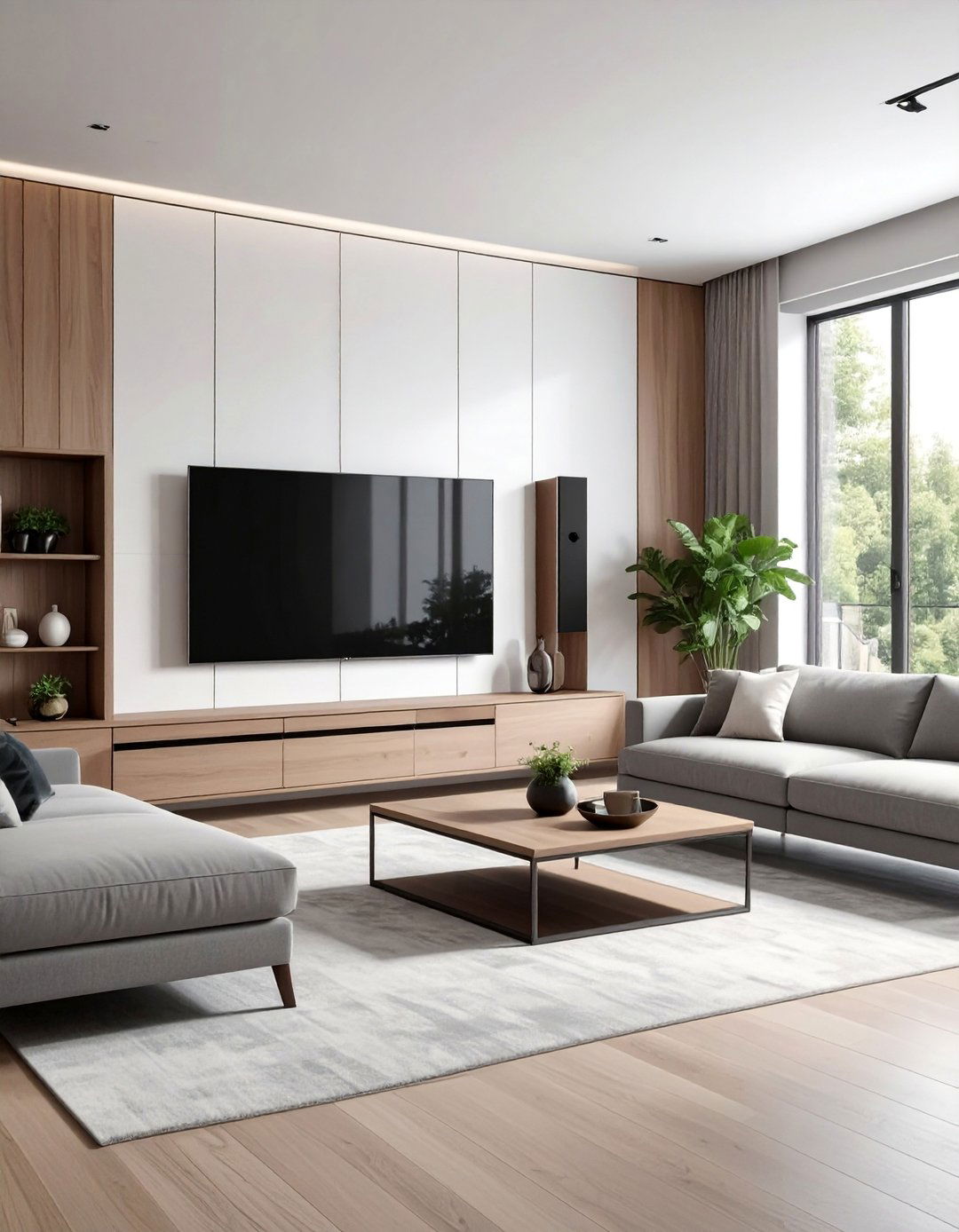
Integrate your sectional layout with your entertainment center for the ultimate media experience in small spaces. Position the sectional to face your television at the optimal viewing distance, typically 8-10 feet for most small room sizes. Consider sectionals with built-in cup holders, USB ports, and reclining features for enhanced comfort during long viewing sessions. Wall-mount your television to save floor space and create a cleaner visual line. Add a media console below for storage while keeping cords organized and hidden. This layout prioritizes function while maintaining style, perfect for families who spend significant time watching movies or gaming together. The entertainment-focused arrangement makes your small living room feel like a dedicated media space.
11. Open Concept Zone Definition
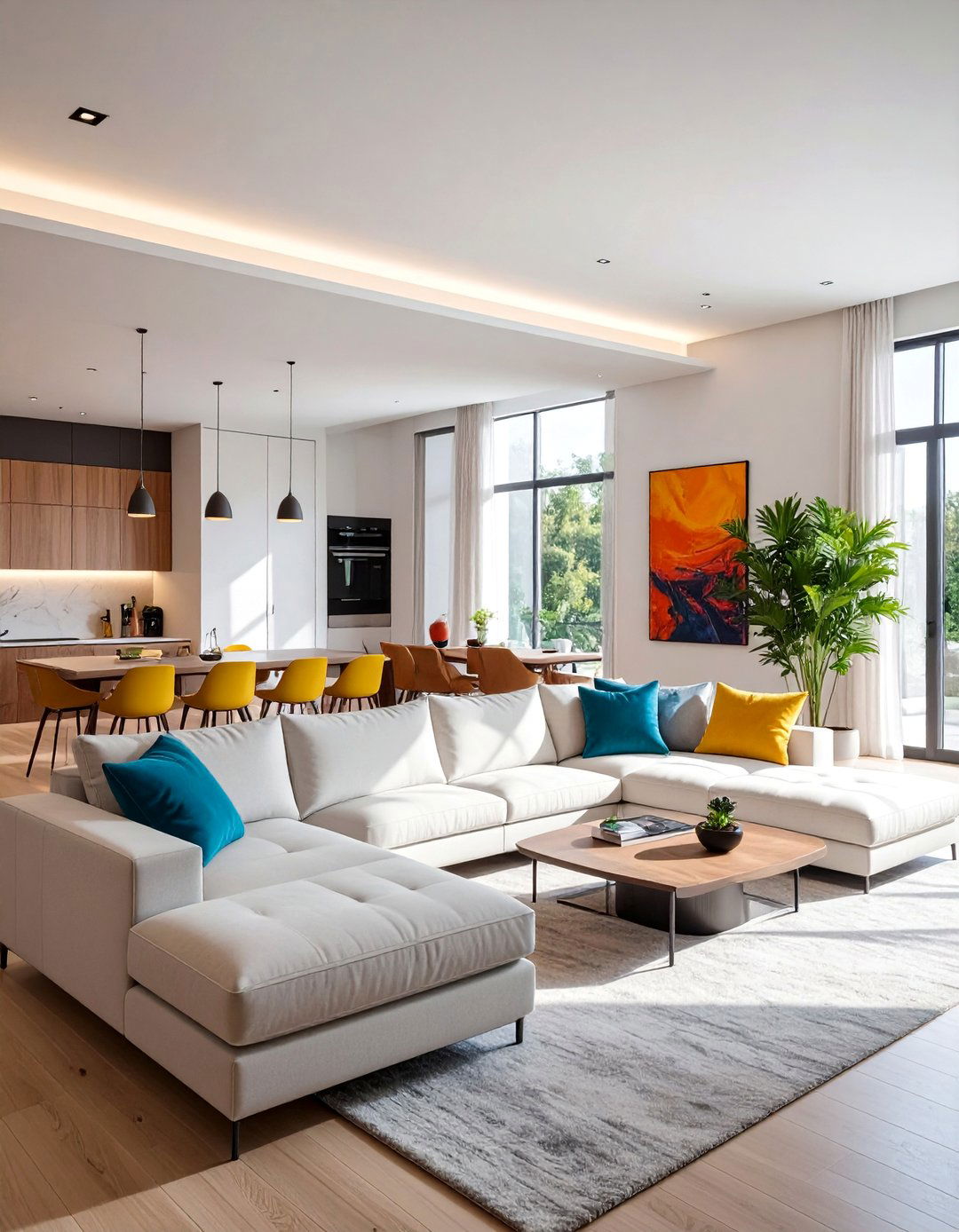
Use sectionals to define living zones in open concept spaces without building walls or adding visual barriers. Position your sectional perpendicular to the main room flow, creating a natural boundary between living and dining areas. The back of the sectional serves as a subtle room divider while maintaining sight lines and conversation flow. Add a narrow console table behind the sectional to create additional surface space and emphasize the zone separation. This arrangement works particularly well in studio apartments or loft spaces where distinct areas enhance functionality. The sectional becomes an architectural element that organizes your space while providing comfortable seating for daily activities and entertainment.
12. Small Space Curved Sectional Design
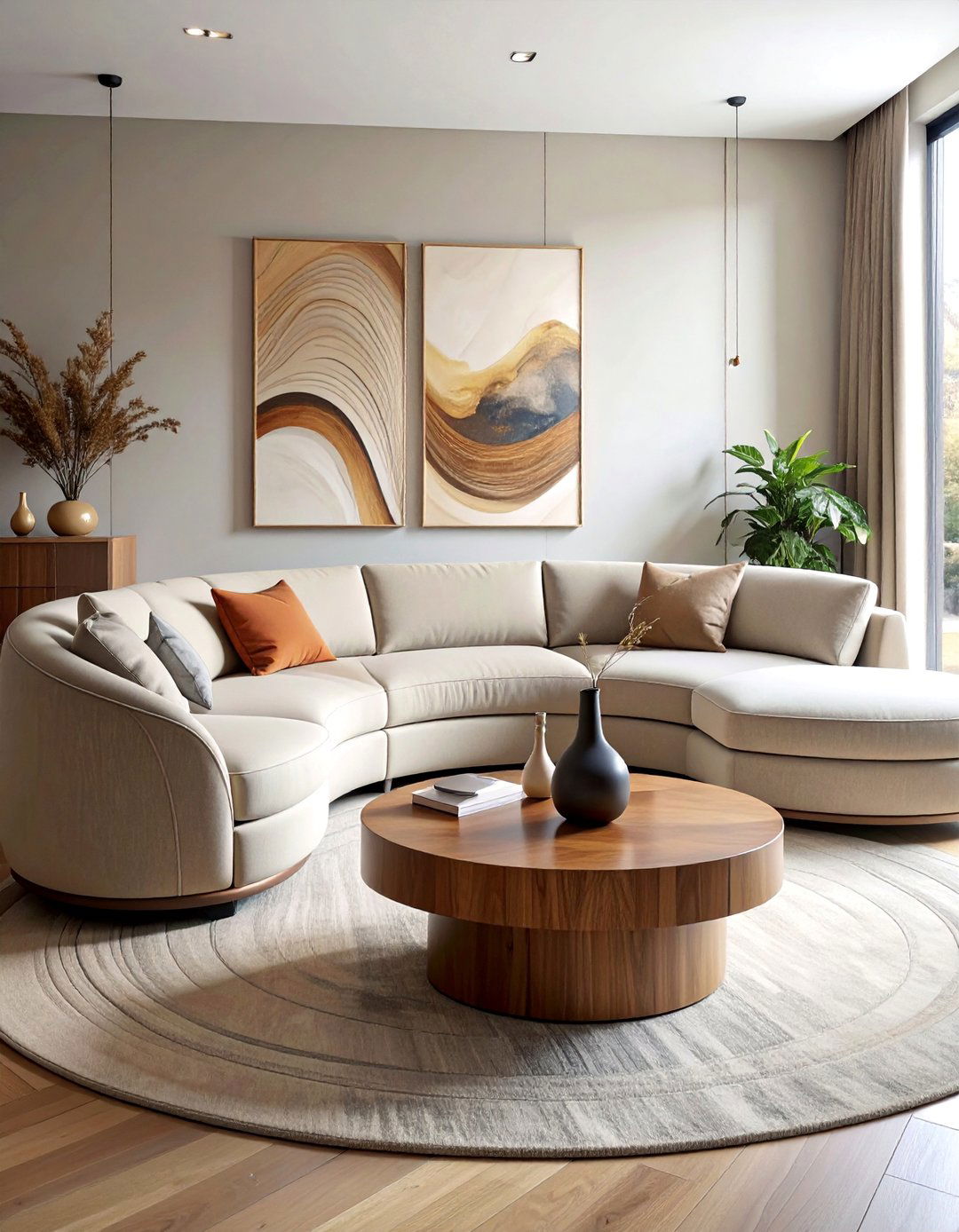
Curved sectionals soften the angular lines often found in small apartments while creating flowing, organic seating arrangements. The curved design promotes natural conversation flow and eliminates sharp corners that can make tight spaces feel harsh. Position curved sectionals to follow your room's natural traffic patterns, creating graceful movement through the space. These pieces work beautifully as focal points in small living rooms, drawing the eye and creating visual interest. The rounded shape often feels less imposing than traditional angular sectionals, making small rooms appear more spacious. Pair with round coffee tables and soft textiles to enhance the flowing, comfortable atmosphere that curved sectionals naturally create.
13. Reclining Sectional Comfort Features
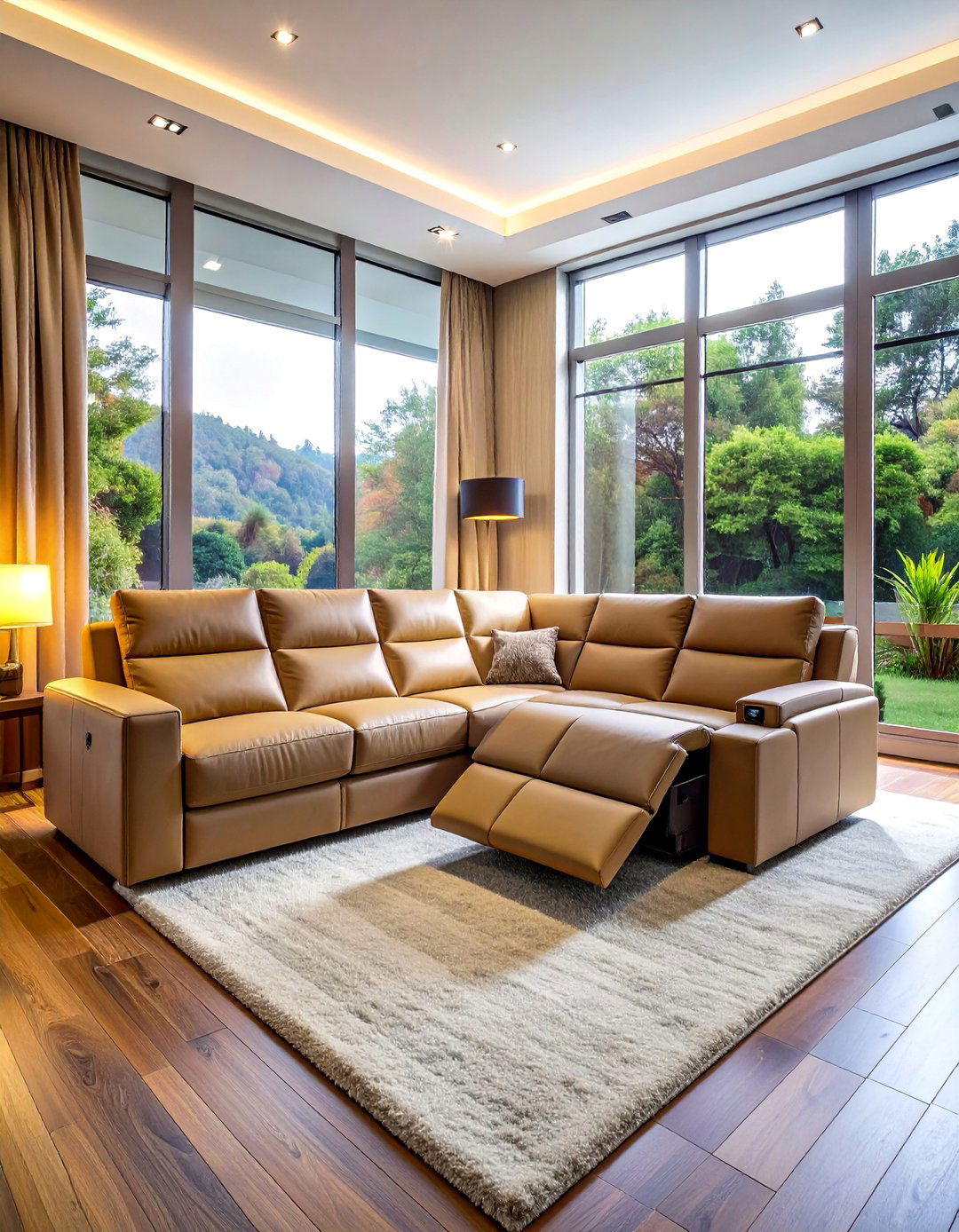
Reclining sectionals bring luxury comfort to small living rooms without requiring additional space for traditional recliners. Modern power recliners fit seamlessly into sectional designs, offering personalized comfort for each family member. Position these sectionals with adequate wall clearance for full recline function, typically 6-8 inches from the wall. Many models include built-in USB charging ports and LED lighting for enhanced convenience. The reclining features make small living rooms feel like personal retreats perfect for relaxation after busy days. Choose models with memory positions that automatically return to your preferred settings. The combination of sectional seating and reclining comfort maximizes functionality while maintaining the space-efficient benefits of sectional design.
14. Sleeper Sectional Dual Purpose
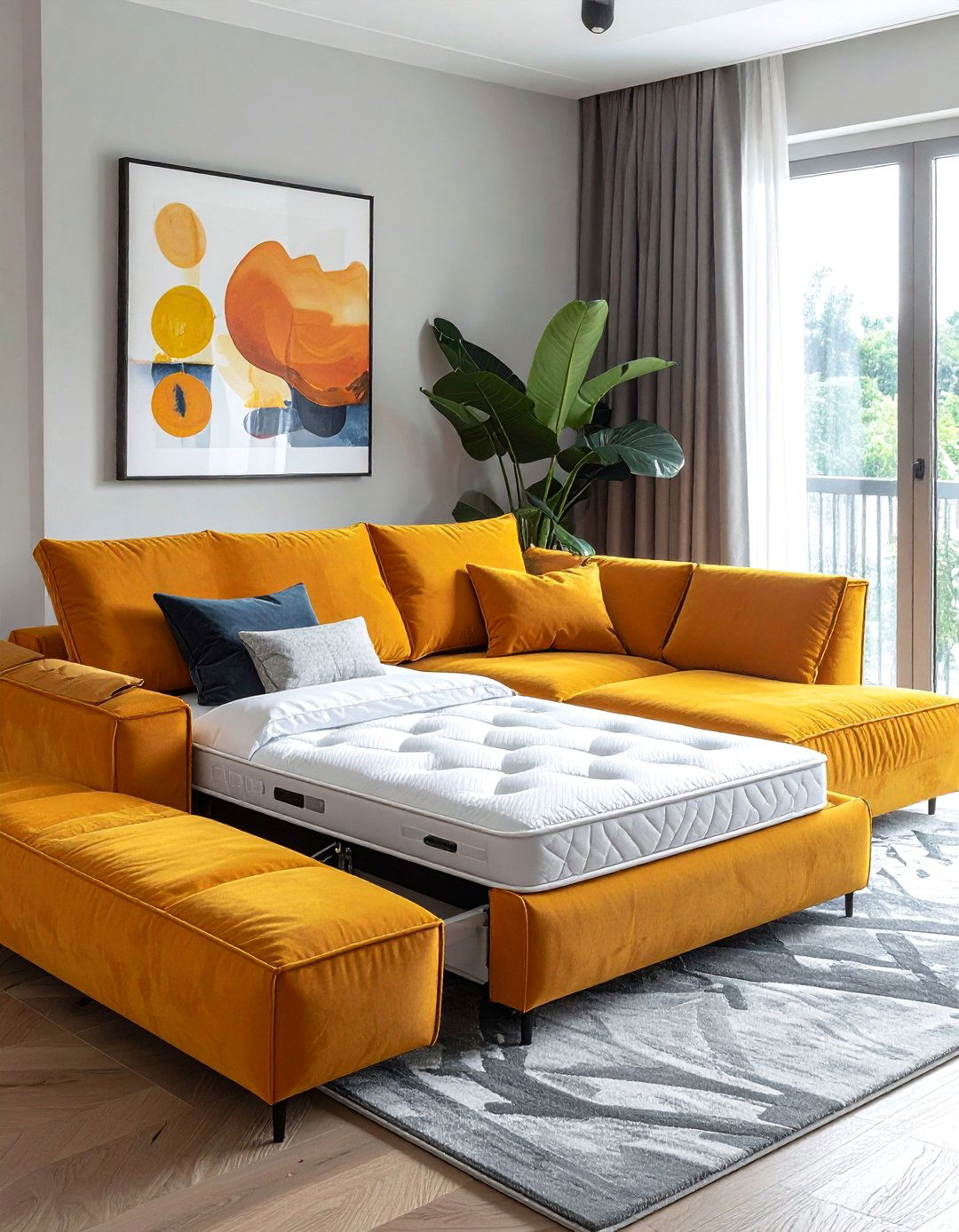
Sleeper sectionals provide essential guest accommodation in small homes where dedicated guest rooms aren't possible. These dual-purpose pieces transform from comfortable daily seating to full-size beds for overnight visitors. Position sleeper sectionals with adequate clearance for bed extension, ensuring smooth operation and comfortable access. Modern mechanisms make conversion simple and quick, encouraging regular use when needed. Storage compartments often accompany sleeper sectionals, providing space for bedding and guest amenities. What could be more convenient than having everything needed for guests stored right in your seating? The dual functionality makes these pieces invaluable investments for small space living, eliminating the need for separate guest furniture while maintaining daily comfort and style.
15. Sectional with Ottoman Flexibility
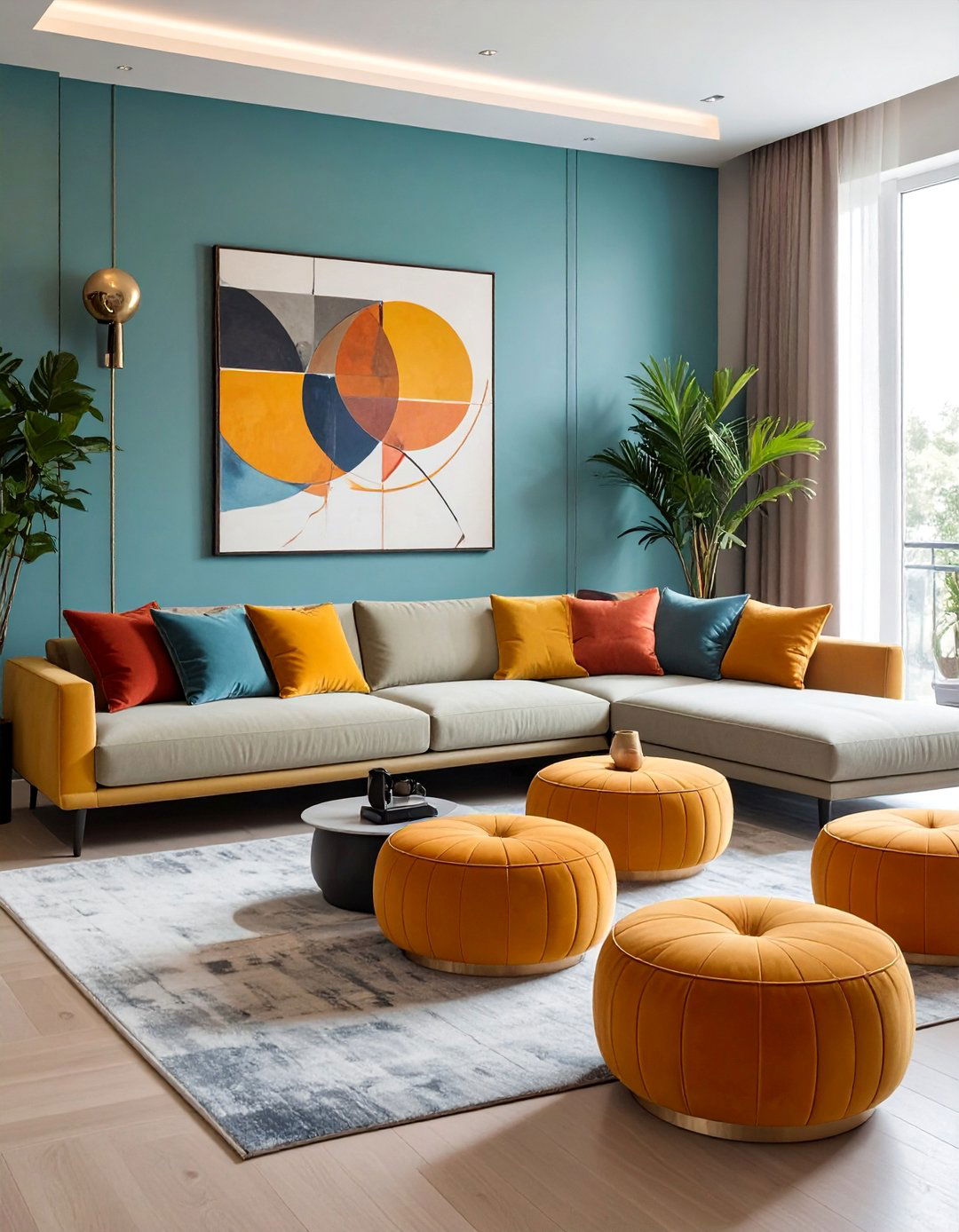
Sectionals paired with matching ottomans create flexible seating arrangements that adapt to different needs and occasions. Ottomans serve multiple functions: extra seating for parties, footrests for relaxation, and coffee tables with the addition of trays. Position ottomans to complement your sectional's layout while maintaining clear pathways through the room. The flexibility allows you to reconfigure seating based on activities, from intimate conversations to larger gatherings. Choose ottomans with storage capabilities to maximize their utility in small spaces. The modular approach creates visual cohesion while providing practical solutions for varying entertainment and relaxation needs. This combination offers the perfect balance between fixed seating comfort and adaptable functionality.
16. Minimalist Sectional Styling
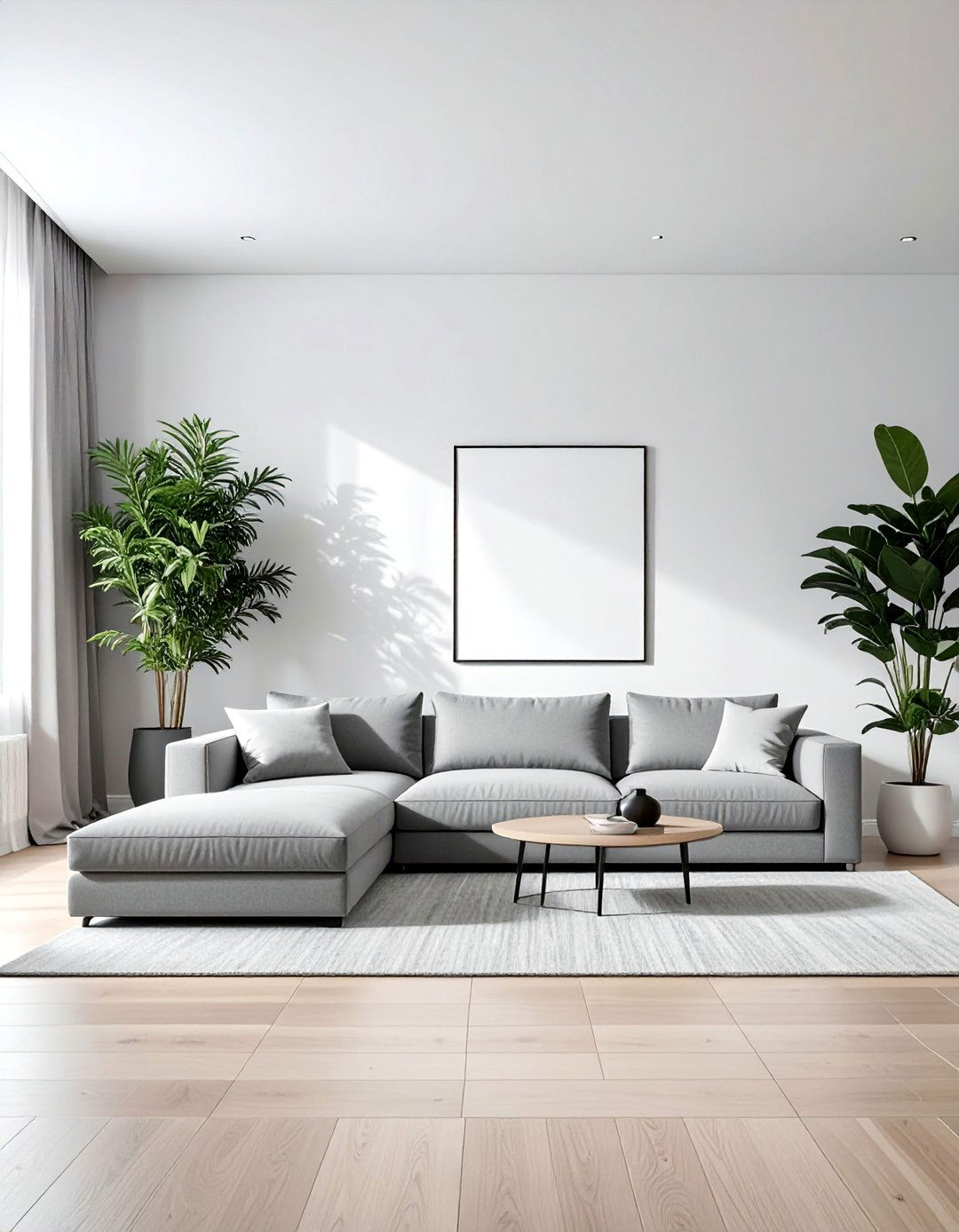
Minimalist sectional styling emphasizes clean lines, neutral colors, and uncluttered arrangements perfect for small living rooms. Choose sectionals with simple silhouettes and solid upholstery colors that won't overwhelm your space visually. Position the sectional as the room's primary furniture piece, keeping additional items to essential minimums. How refreshing does a clutter-free space feel after a busy day? The minimalist approach makes small rooms feel larger and more serene by eliminating visual competition. Select sectionals with hidden legs or floating appearances to enhance the clean aesthetic. Complement with minimal coffee tables and simple textiles in coordinating neutral tones. This styling approach creates timeless appeal while maximizing the sense of space and calm in compact living areas.
17. Color Coordination Sectional Schemes
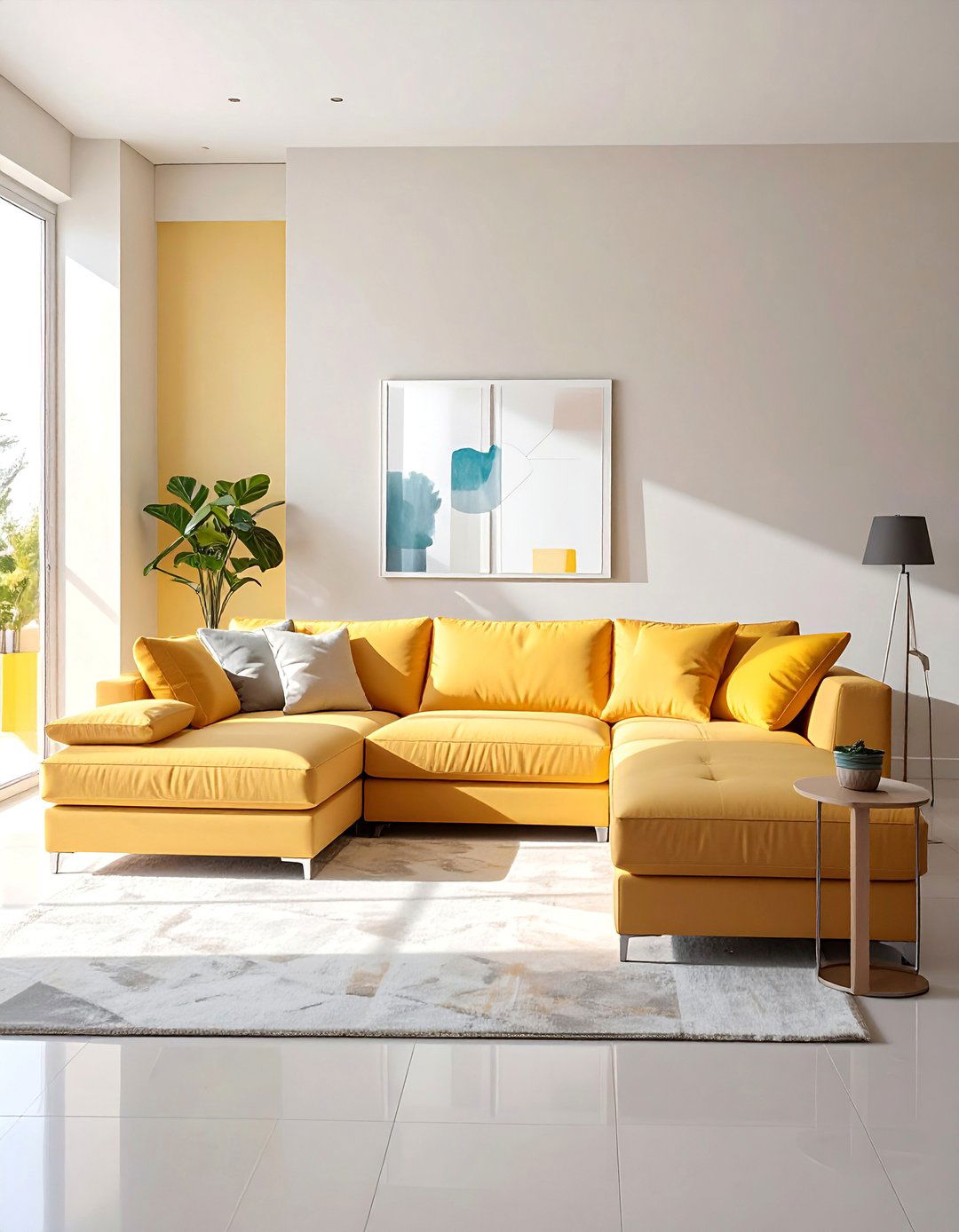
Strategic color coordination helps sectionals integrate seamlessly into small living room designs while creating visual harmony. Light-colored sectionals reflect natural light and make spaces feel larger, while darker tones create cozy, intimate atmospheres. Consider your room's natural lighting when selecting sectional colors – north-facing rooms benefit from warmer tones while south-facing spaces can handle cooler colors. Coordinate sectional upholstery with wall colors and window treatments for cohesive design flow. Add contrast through throw pillows and blankets rather than conflicting furniture colors. The coordinated approach creates sophisticated visual unity that makes small spaces feel intentionally designed rather than randomly furnished. Neutral sectionals provide versatile foundations for changing accent colors with seasons or trends.
18. Texture Mixing Sectional Combinations
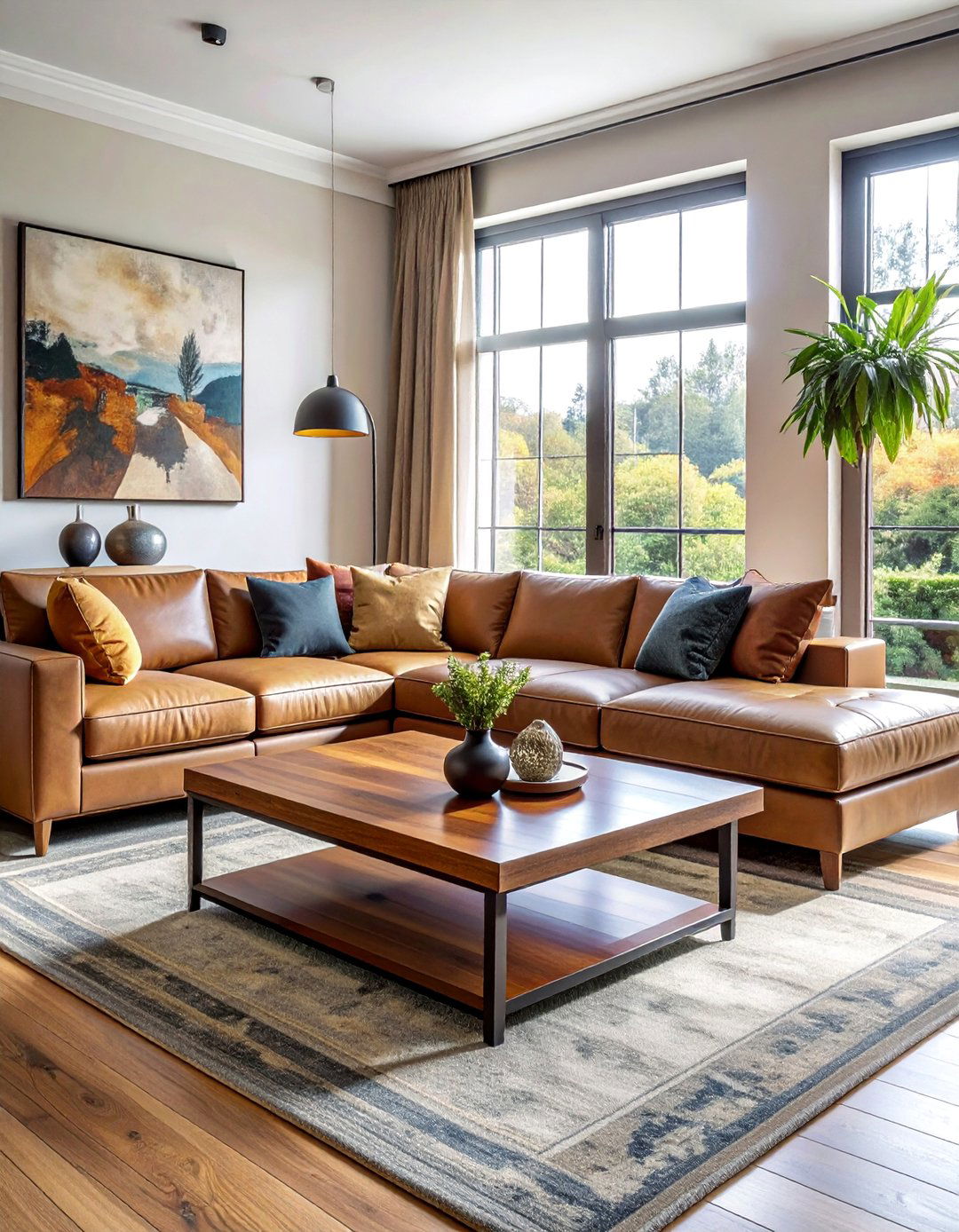
Mix textures strategically around sectionals to create visual interest and depth in small living rooms without adding clutter. Combine smooth leather sectionals with nubby throw pillows and soft blankets for tactile variety. Fabric sectionals pair beautifully with wooden coffee tables and metal accent pieces for balanced material mixing. Layer different textures through area rugs, curtains, and decorative objects to create rich, inviting environments. The textural variety prevents small spaces from feeling flat or boring while maintaining clean, organized appearances. Choose a dominant texture for your sectional and support it with complementary materials throughout the room. This approach adds sophistication and warmth to small living rooms without overwhelming limited space with too many competing elements.
19. Sectional Lighting Integration
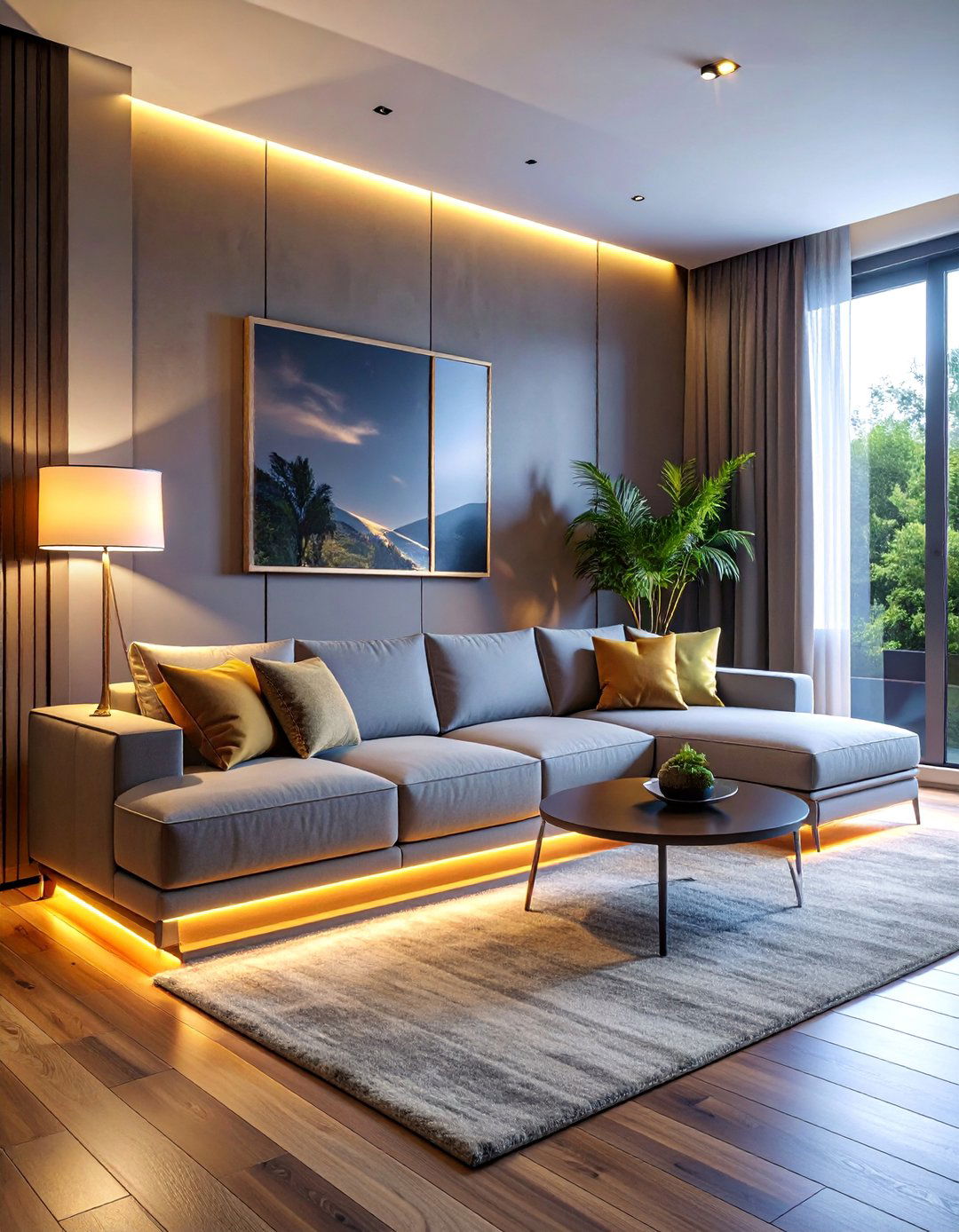
Integrate lighting solutions that complement sectional arrangements while enhancing both functionality and ambiance in small living rooms. Position floor lamps beside sectional ends to provide reading light without requiring side tables. Consider sectionals with built-in LED lighting or USB charging capabilities for modern convenience. Add table lamps on nearby surfaces to create layered lighting that makes small spaces feel warm and inviting. Under-sectional lighting creates dramatic effects while making the piece appear to float. How does soft, ambient lighting transform your evening relaxation time? Strategic lighting placement eliminates dark corners that can make small rooms feel smaller while providing task lighting for various activities. The integrated approach ensures your sectional area remains well-lit and functional throughout different times of day.
20. Pet-Friendly Sectional Materials
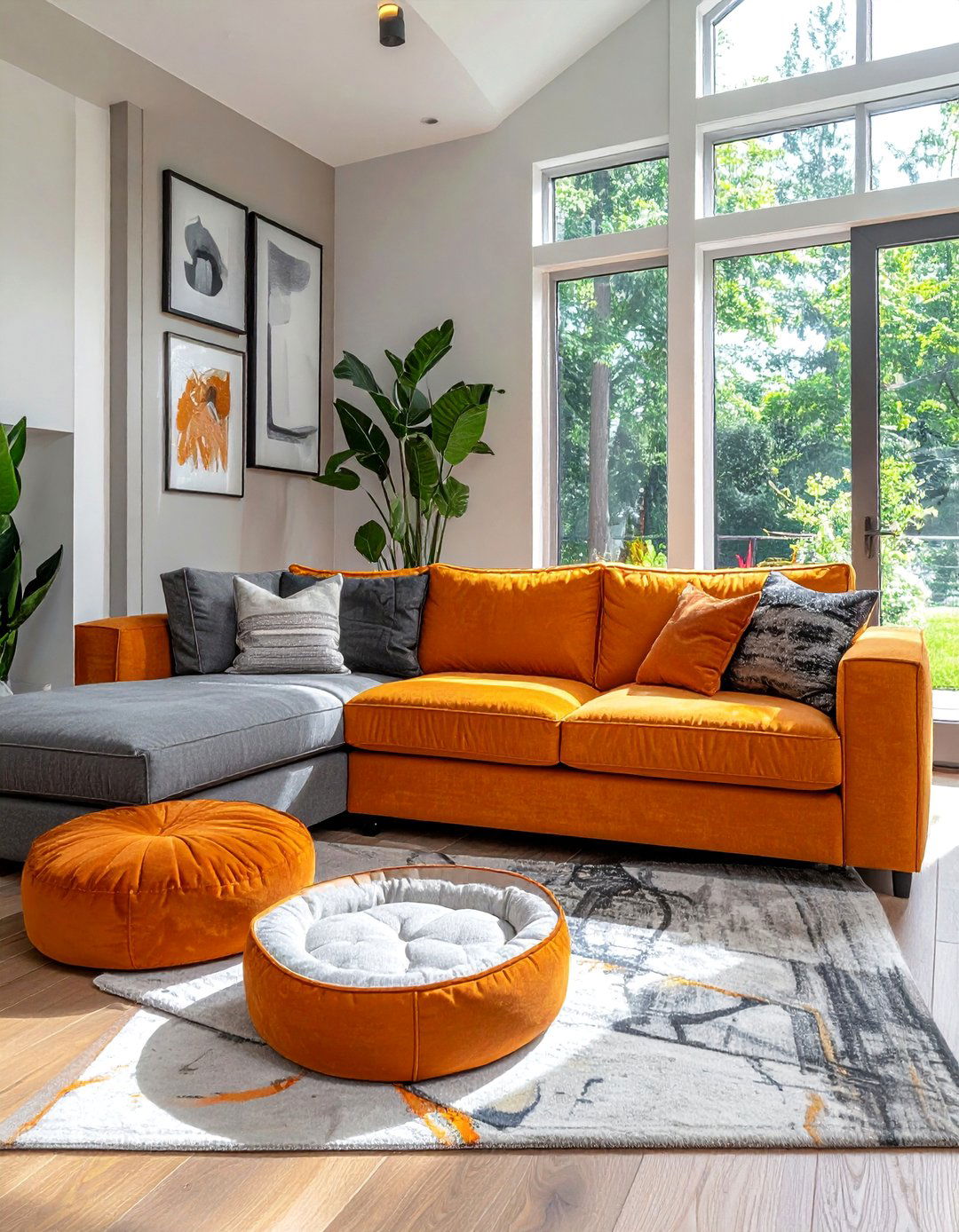
Choose pet-friendly sectional materials and arrangements that accommodate furry family members while maintaining style in small living rooms. Performance fabrics resist stains, scratches, and pet hair while providing easy cleaning for active households. Leather sectionals often work well with pets, developing attractive patina over time while remaining durable. Position sectionals with adequate space for pet beds or favorite lounging spots nearby. Consider sectionals with removable, washable covers for easy maintenance when accidents happen. Darker colors and patterns help disguise pet hair and minor wear while keeping your small living room looking fresh. The pet-friendly approach ensures your sectional remains beautiful and functional regardless of your furry companions' activities. Choose materials that balance durability with comfort for both human and pet family members.
21. Sectional Room Scale Proportions
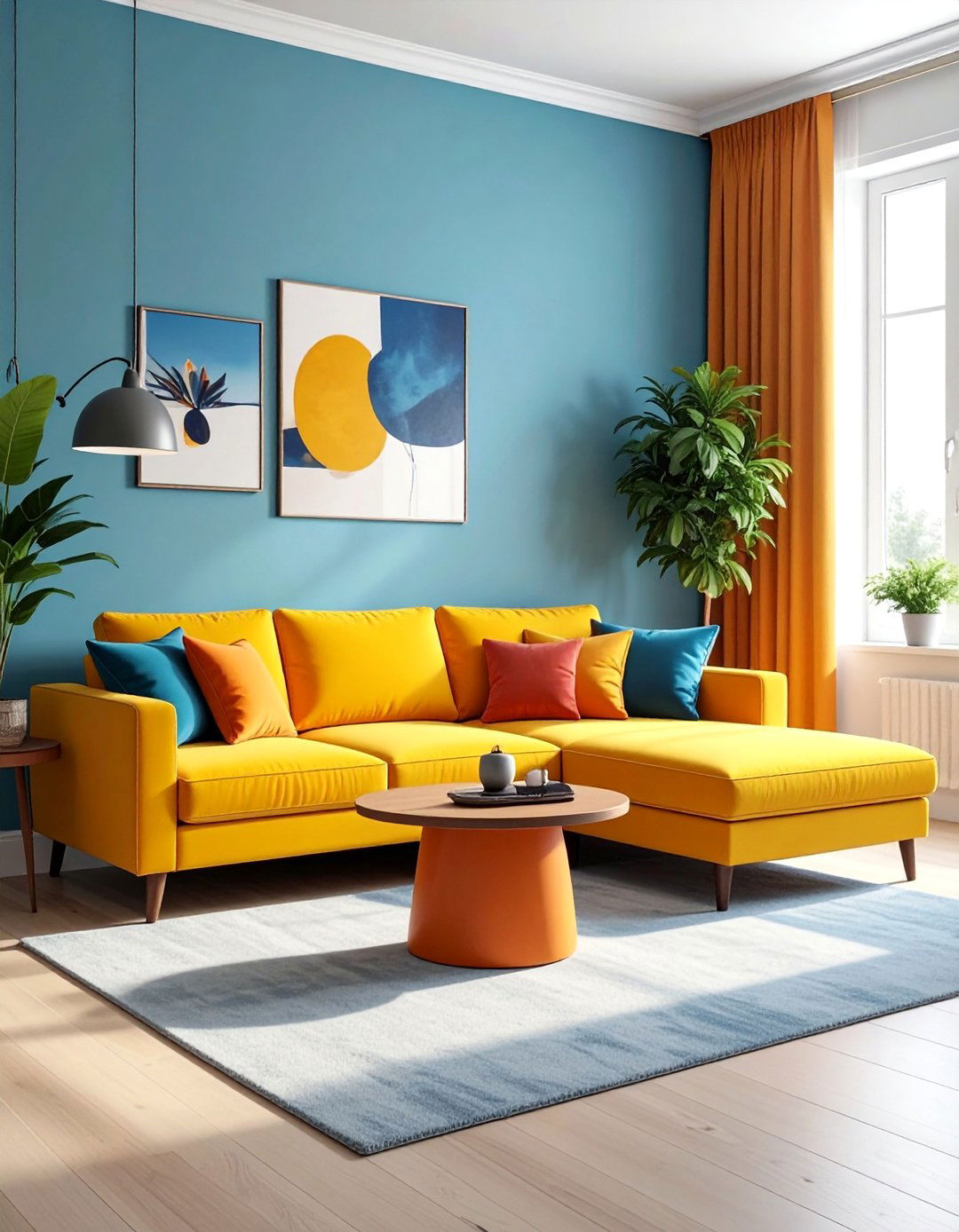
Proper scale relationships between sectionals and room dimensions create balanced, comfortable small living room environments. Measure your space carefully, allowing for 14-18 inches of walking space around the sectional for comfortable movement. Choose sectionals that occupy roughly one-third of your room's floor space, leaving adequate room for other essential furniture. Lower-backed sectionals work better in rooms with standard 8-foot ceilings, while higher ceilings can accommodate taller pieces. The visual weight of your sectional should complement rather than dominate your small space. Consider the sight lines from your sectional to other rooms and views to ensure the piece enhances rather than blocks important visual connections. Proper proportions make small living rooms feel spacious and well-designed rather than cramped or awkward.
22. Multi-Functional Sectional Features
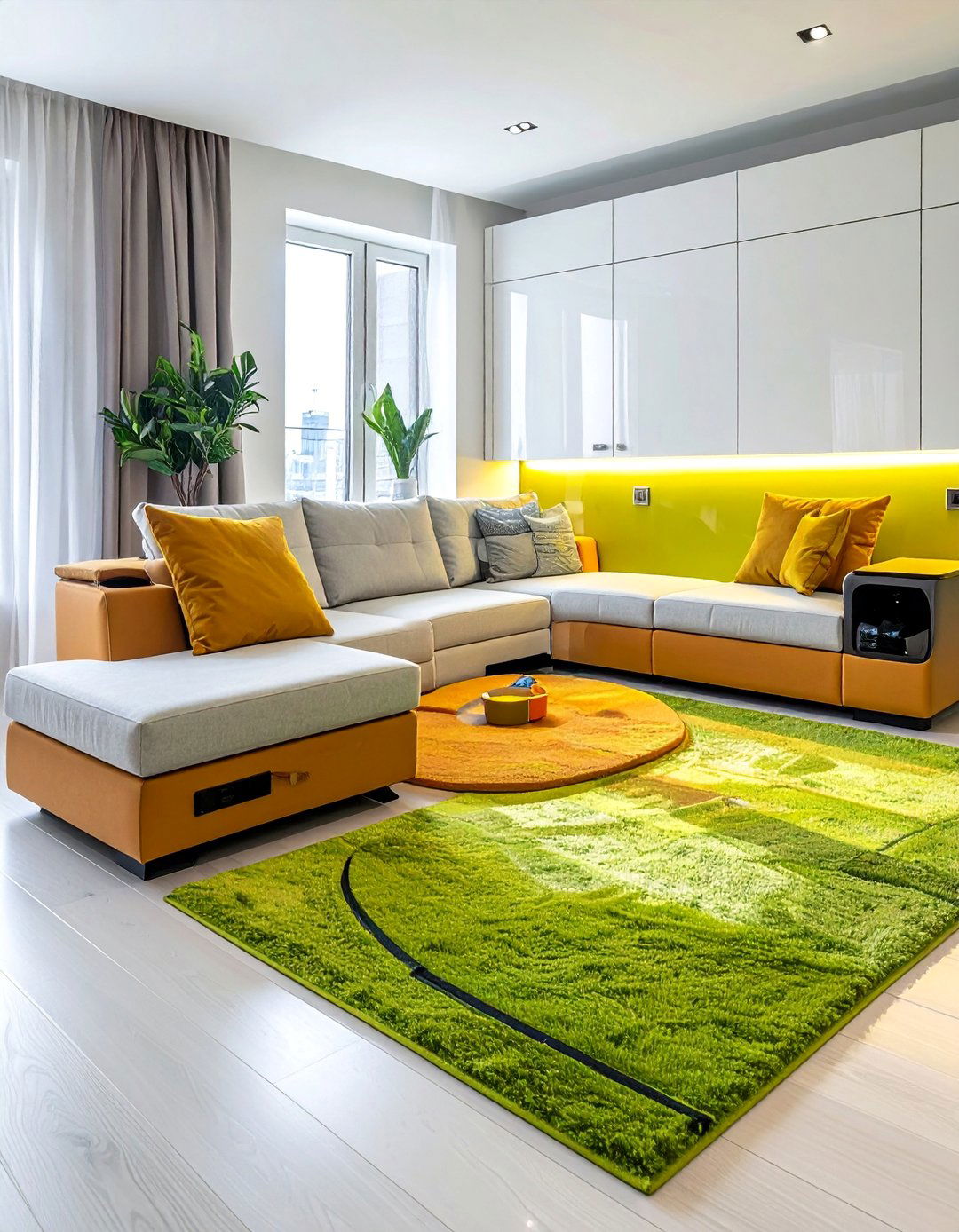
Modern sectionals incorporate multiple functions that eliminate the need for additional furniture in small living rooms. Look for pieces with built-in side tables, cup holders, and storage compartments that reduce clutter while enhancing convenience. Some sectionals include fold-down dining surfaces perfect for casual meals or laptop work. Charging stations and built-in speakers address modern technology needs without requiring extra equipment. How wonderful would it be to have everything you need within arm's reach of your favorite seating spot? The multi-functional approach maximizes utility while minimizing furniture pieces, essential for small space success. Choose features that align with your lifestyle needs, whether that's entertainment technology, storage solutions, or work-from-home capabilities. These enhanced sectionals become central command centers for daily living in compact homes.
23. Sectional Traffic Flow Optimization
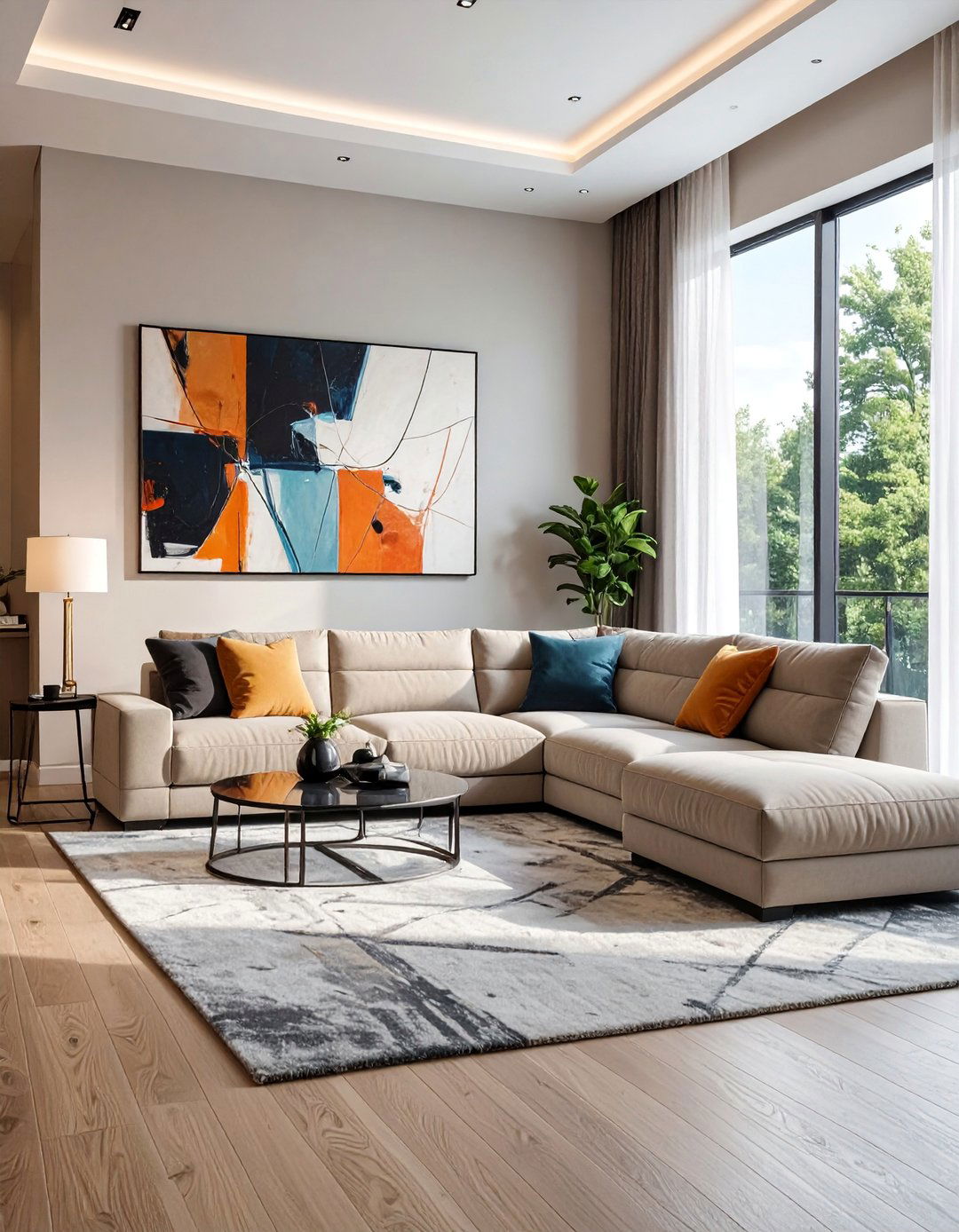
Optimize traffic flow around sectionals to ensure small living rooms remain functional and comfortable for daily activities. Position sectionals to avoid blocking natural pathways between rooms while maintaining clear sight lines to important areas. Leave adequate space for people to move comfortably behind seated individuals, typically 36 inches minimum. Consider how the sectional placement affects access to windows, closets, and other frequently used features. The arrangement should enhance rather than hinder your daily routines and movement patterns. Create clear pathways that feel natural and unobstructed, making your small space feel larger and more livable. Strategic sectional placement can actually improve traffic flow by directing movement in organized patterns rather than creating random furniture obstacles throughout the room.
24. Sectional Seasonal Adaptation
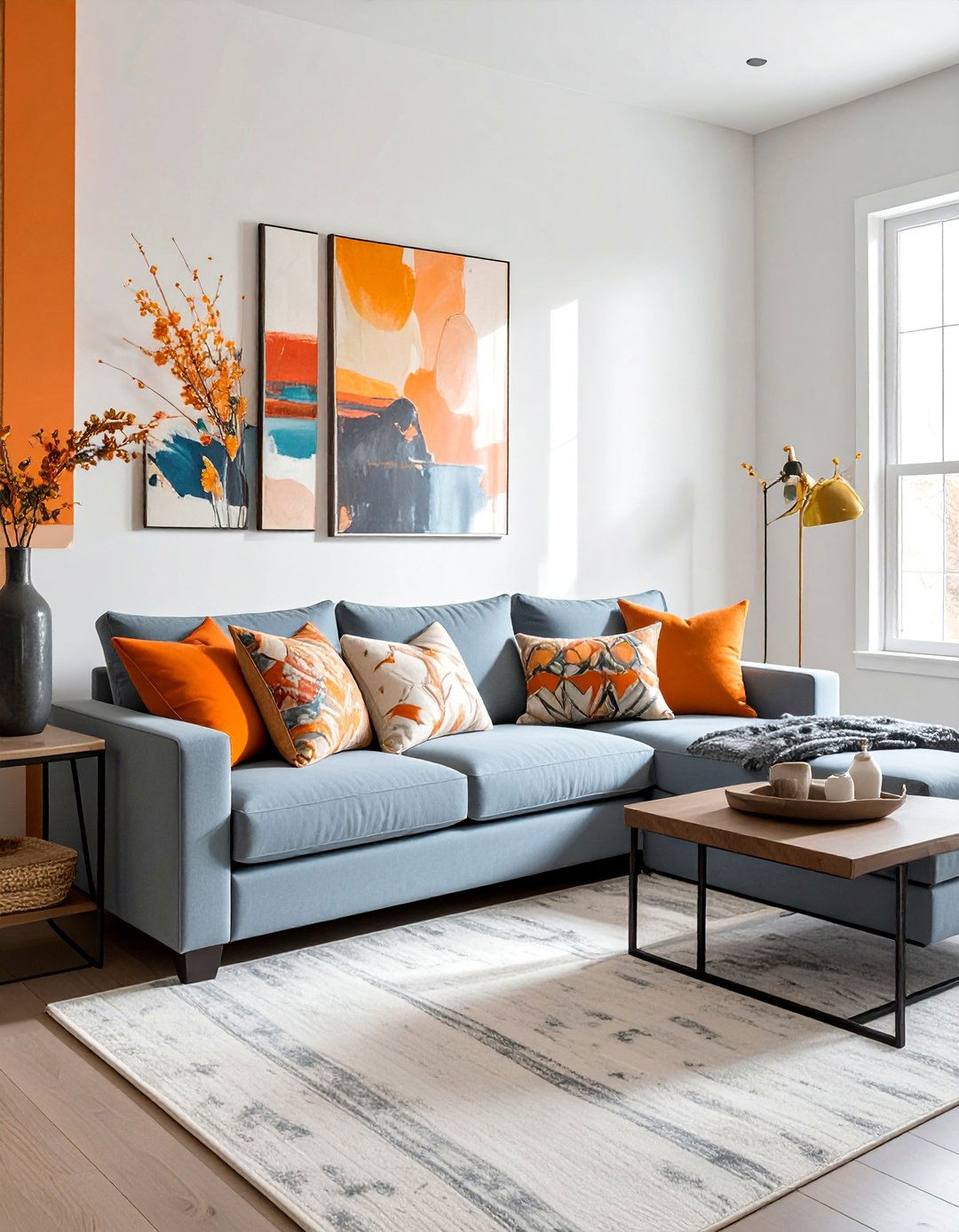
Design sectional arrangements that adapt easily to seasonal changes and varying entertainment needs throughout the year. Choose neutral sectional colors that work with different seasonal decorating themes while maintaining year-round appeal. Position sectionals to take advantage of seasonal lighting changes, whether embracing winter coziness or summer brightness. Consider how holiday entertaining might require different configurations and ensure your sectional placement allows for these temporary changes. Seasonal adaptation might involve moving ottomans, changing throw pillow arrangements, or temporarily relocating accent pieces. The flexible approach keeps your small living room feeling fresh and appropriate for different times of year without requiring major furniture investments. Plan sectional placement to accommodate both intimate winter evenings and open summer gatherings with family and friends.
25. Sectional Investment Planning
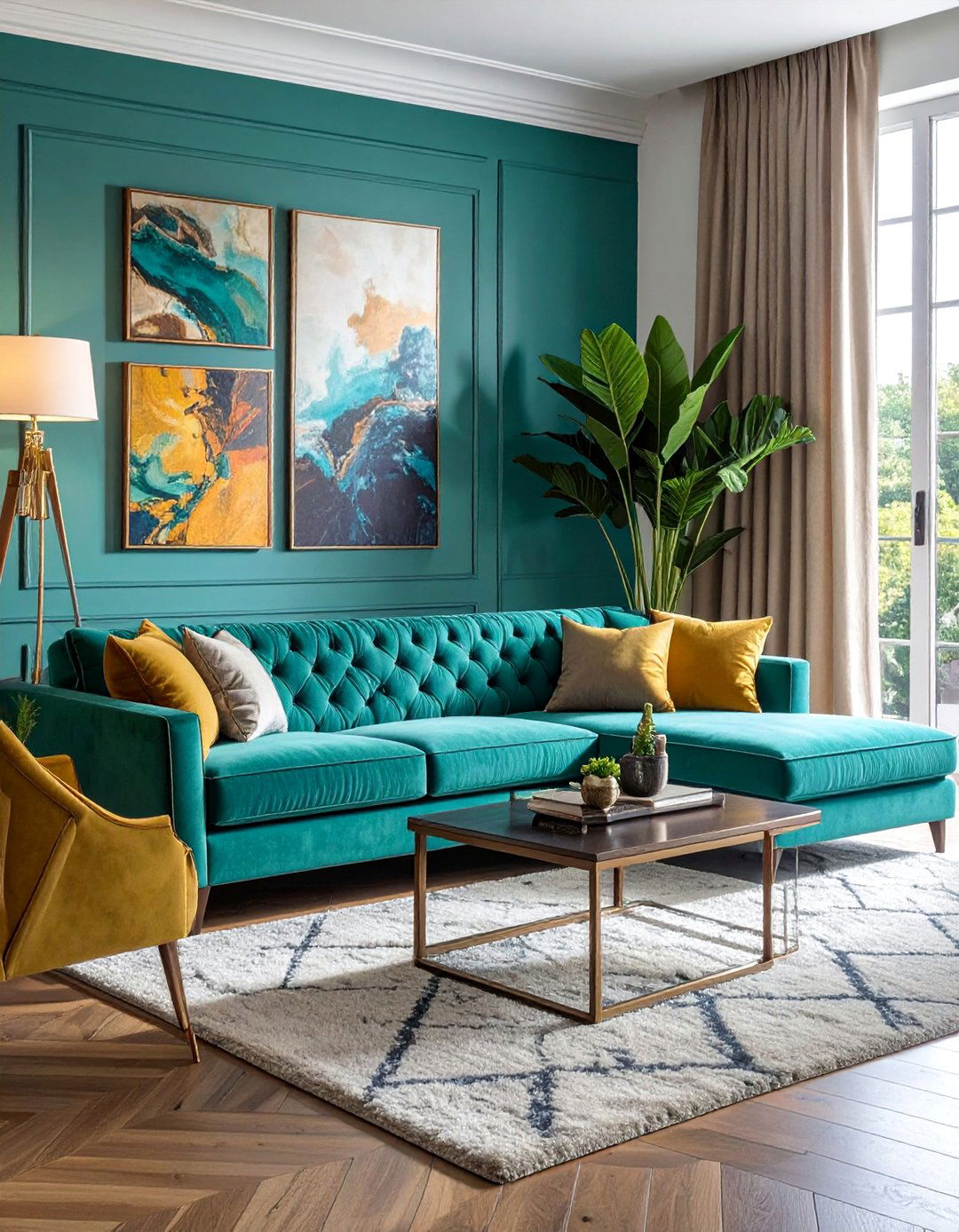
Plan sectional investments strategically to ensure long-term satisfaction and value in small living room settings. Consider sectionals as significant furniture investments that should serve your needs for many years across potential moves and lifestyle changes. Modular options provide flexibility for future space configurations while maintaining current functionality. Quality construction and durable materials justify higher initial costs through extended useful life and maintained appearance. Think about your lifestyle trajectory – will you need more seating as your family grows or less as children move away? Choose sectionals with timeless styling that won't become dated quickly while offering comfort features you'll appreciate long-term. The investment approach ensures your sectional remains a valued focal point rather than a regrettable purchase that doesn't suit your evolving needs.
26. Sectional Style Evolution
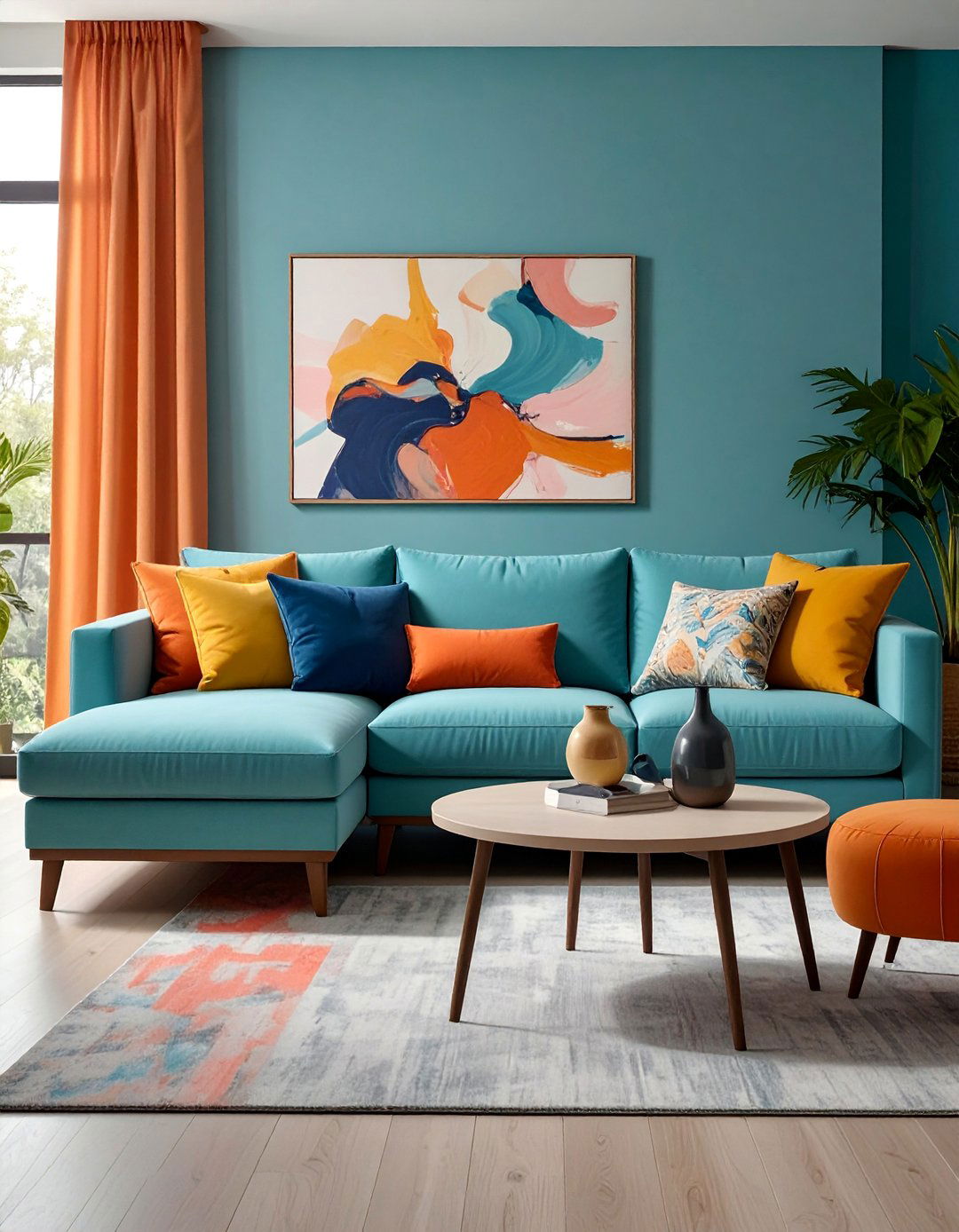
Allow sectional styling to evolve with changing design trends while maintaining core functionality in small living rooms. Choose foundational sectional pieces in neutral colors and classic silhouettes that accommodate different decorating styles over time. Update the look through changing throw pillows, blankets, and nearby accessories rather than replacing the entire sectional. Consider how your personal style might develop and ensure your sectional choice provides a versatile foundation for growth. The evolutionary approach maximizes your furniture investment while keeping your small space feeling current and personally meaningful. Quality sectionals can serve as constant foundations while surrounding elements change with trends, seasons, and personal preferences. This strategy maintains design freshness without the expense and disruption of frequent major furniture changes.
27. Sectional Guest Accommodation
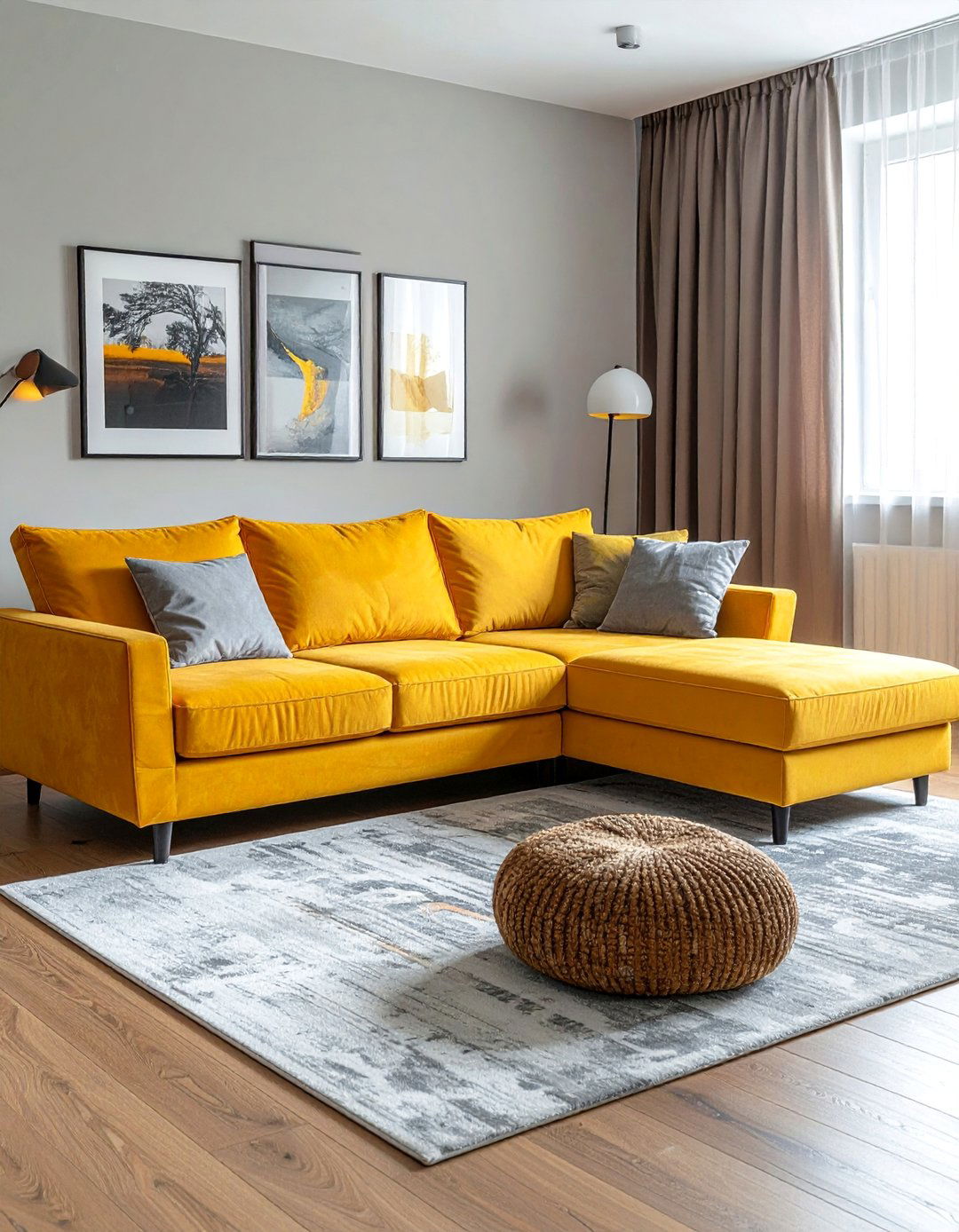
Design sectional arrangements that gracefully accommodate overnight guests in small living rooms without permanent space dedication. Sleeper sectionals provide obvious guest solutions, but other arrangements can also work effectively. Consider sectionals with generous dimensions that allow comfortable temporary sleeping with quality air mattresses or sleeping bags. Position sectionals to allow easy conversion to guest sleeping areas while maintaining privacy and comfort. Storage sectionals can house guest bedding and amenities, keeping everything organized and accessible when needed. How reassuring is it to know you can welcome unexpected visitors comfortably? The guest-ready approach ensures your small living room serves multiple functions without sacrificing daily comfort or requiring dedicated guest furniture that might rarely be used.
28. Sectional Technology Integration
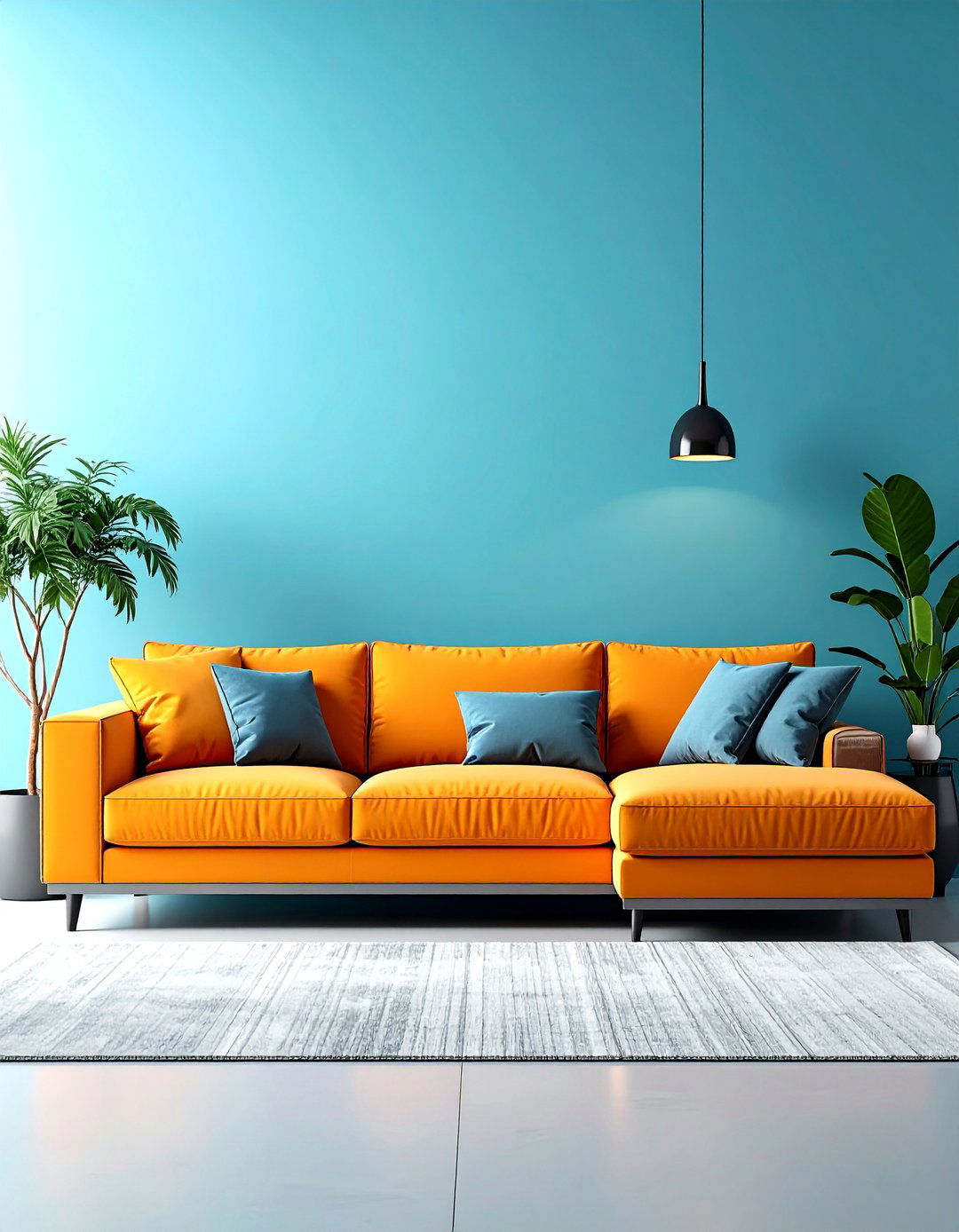
Integrate modern technology seamlessly with sectional arrangements to enhance convenience and entertainment in small living rooms. Choose sectionals with built-in USB charging ports, wireless charging pads, and integrated speakers that eliminate cord clutter. Position sectionals optimally for television viewing, gaming, and video conferencing needs that define modern living. Consider how smart home devices might integrate with your sectional area for voice control and automated comfort features. The technology integration should feel natural and enhance rather than complicate your living experience. Built-in features often provide cleaner solutions than added accessories while offering better functionality. Modern sectionals can serve as central hubs for connected living, supporting work, entertainment, and communication needs without creating technology chaos in small spaces.
29. Sectional Maintenance Accessibility
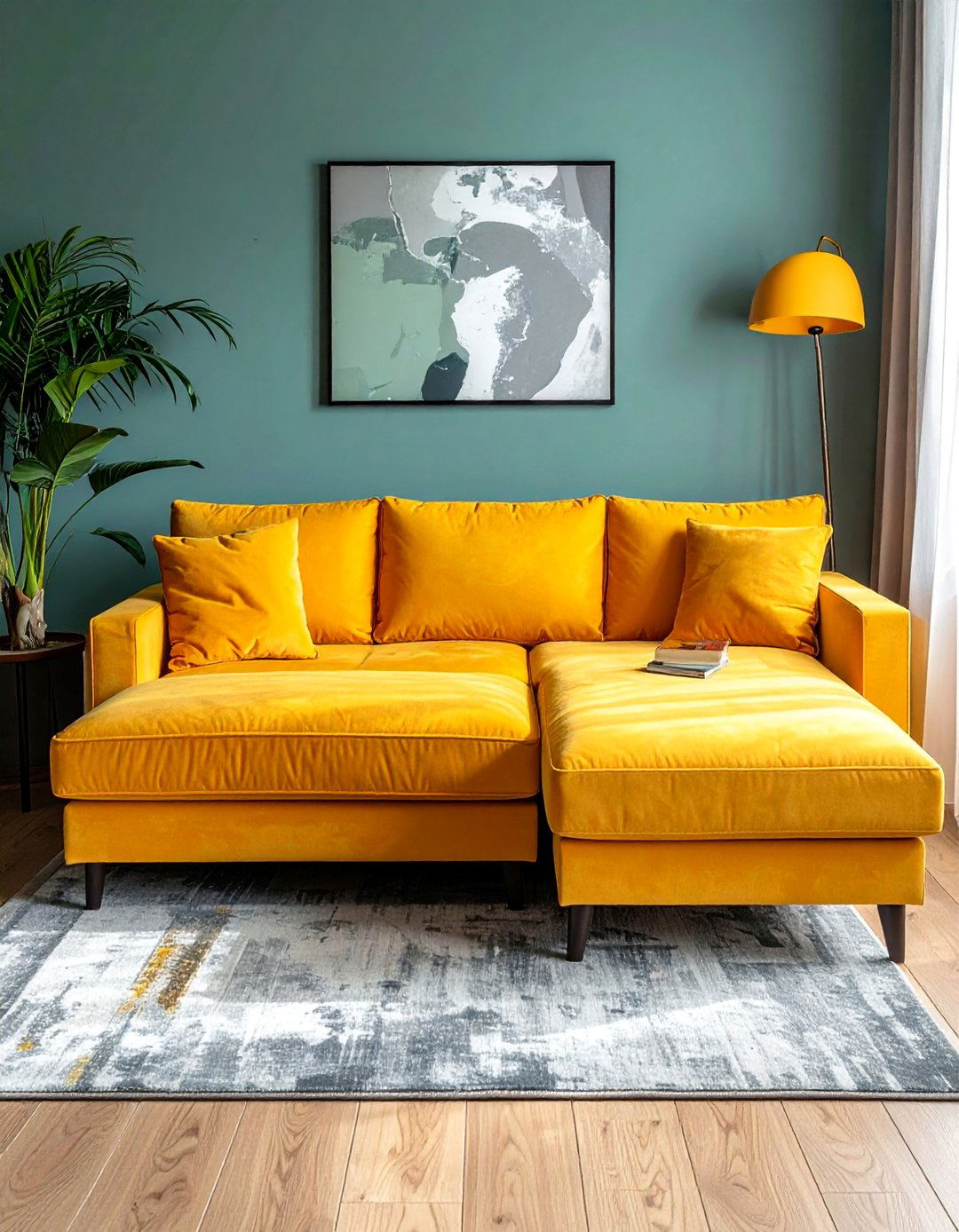
Plan sectional placement with maintenance and cleaning accessibility in mind to keep small living rooms looking their best long-term. Position sectionals with adequate space for vacuuming underneath and around all sides for thorough cleaning. Choose sectionals with removable cushion covers for easy washing and professional cleaning when needed. Consider how often you'll need to move the sectional for deep cleaning and ensure the weight and design allow for reasonable repositioning. Professional cleaning access might require temporary furniture moving, so plan accordingly. The maintenance-conscious approach ensures your sectional remains attractive and hygienic throughout its useful life. Easy-care features like stain-resistant fabrics and simple construction reduce ongoing maintenance while preserving appearance and extending sectional life in busy small living rooms.
30. Sectional Future Flexibility
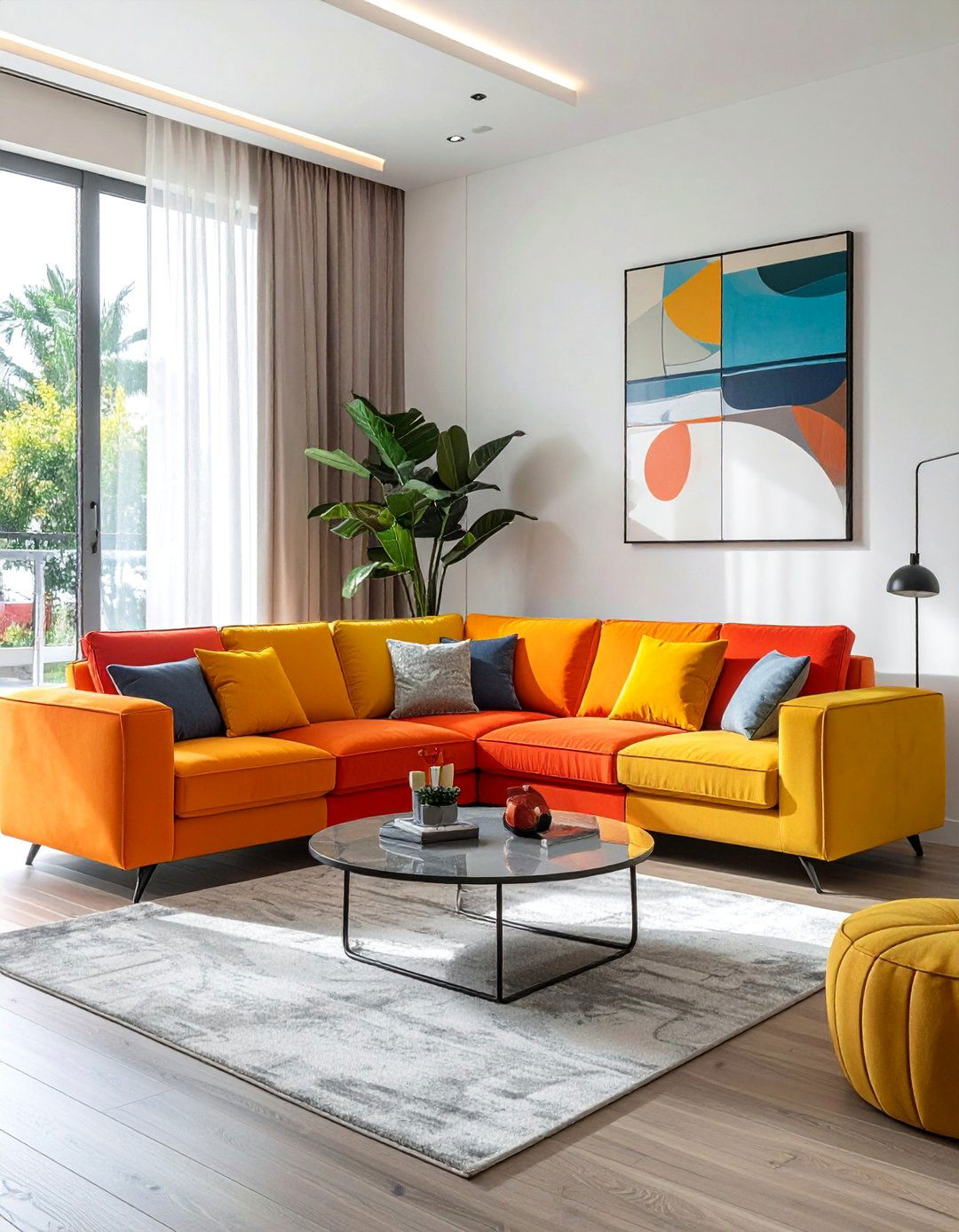
Design sectional arrangements with future flexibility in mind, anticipating potential life changes that might affect your small living room needs. Choose modular systems that can expand or contract based on changing space requirements or family size. Consider how aging might affect mobility and access needs around your sectional placement. Plan for potential technology changes that could require different entertainment configurations. The flexible approach ensures your sectional investment continues serving your needs regardless of future circumstances. Quality sectionals with adaptable features provide long-term value while accommodating life's inevitable changes. Think beyond current needs to ensure your sectional choice supports rather than limits future living arrangements and lifestyle developments in your evolving small space.
Conclusion:
Small living room sectional layouts prove that limited space doesn't mean compromising on comfort, style, or functionality. Through strategic placement, thoughtful configuration choices, and creative design approaches, sectionals become powerful tools for maximizing both seating and visual appeal in compact homes. Whether you choose corner arrangements, floating layouts, or modular systems, the key lies in understanding your specific space constraints and lifestyle needs. Modern sectionals offer incredible versatility through innovative features, adaptable configurations, and space-efficient designs that grow with your changing requirements. The investment in a well-chosen sectional pays dividends through years of comfortable living, enhanced entertaining capabilities, and improved space utilization that makes small rooms feel spacious and welcoming.

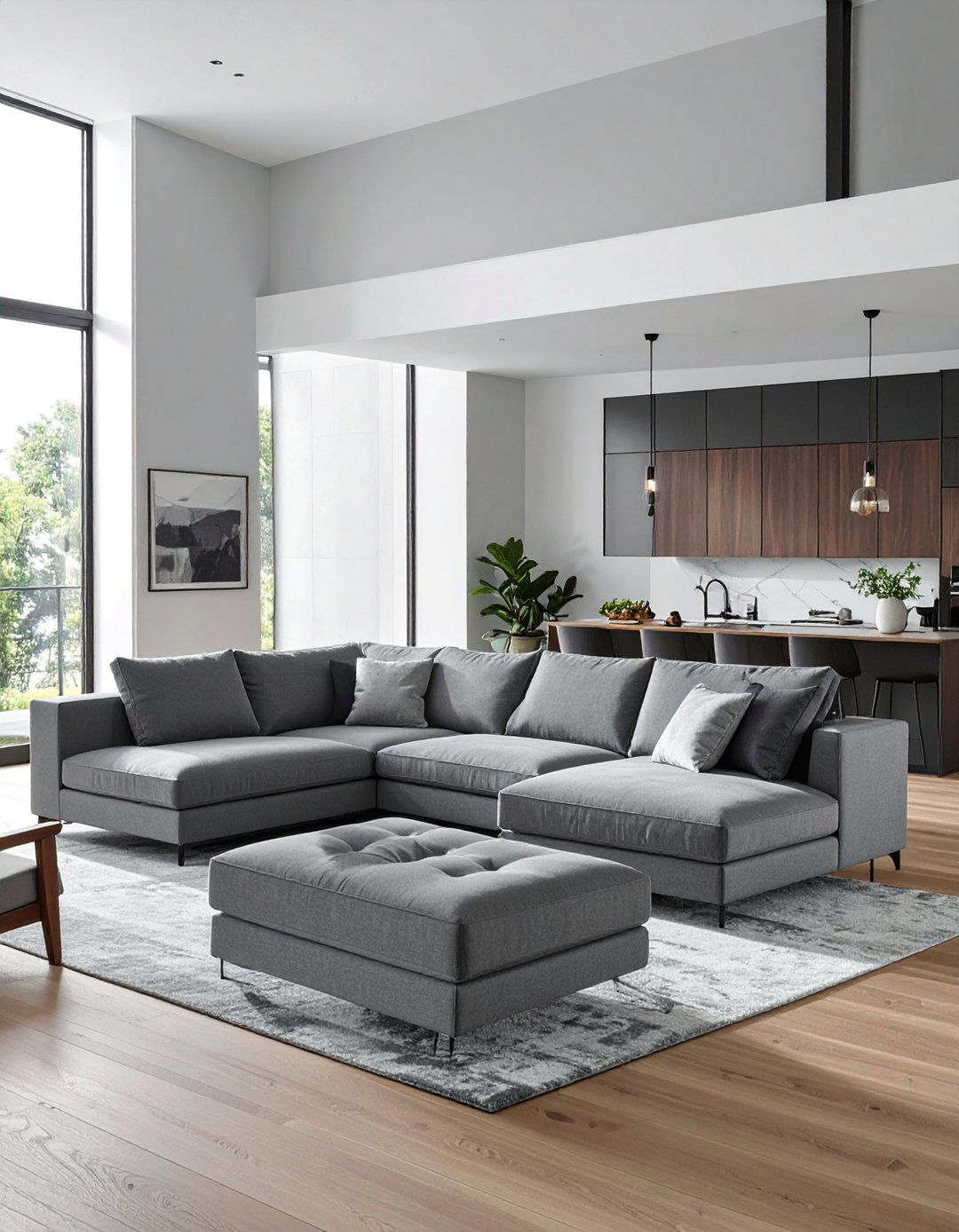
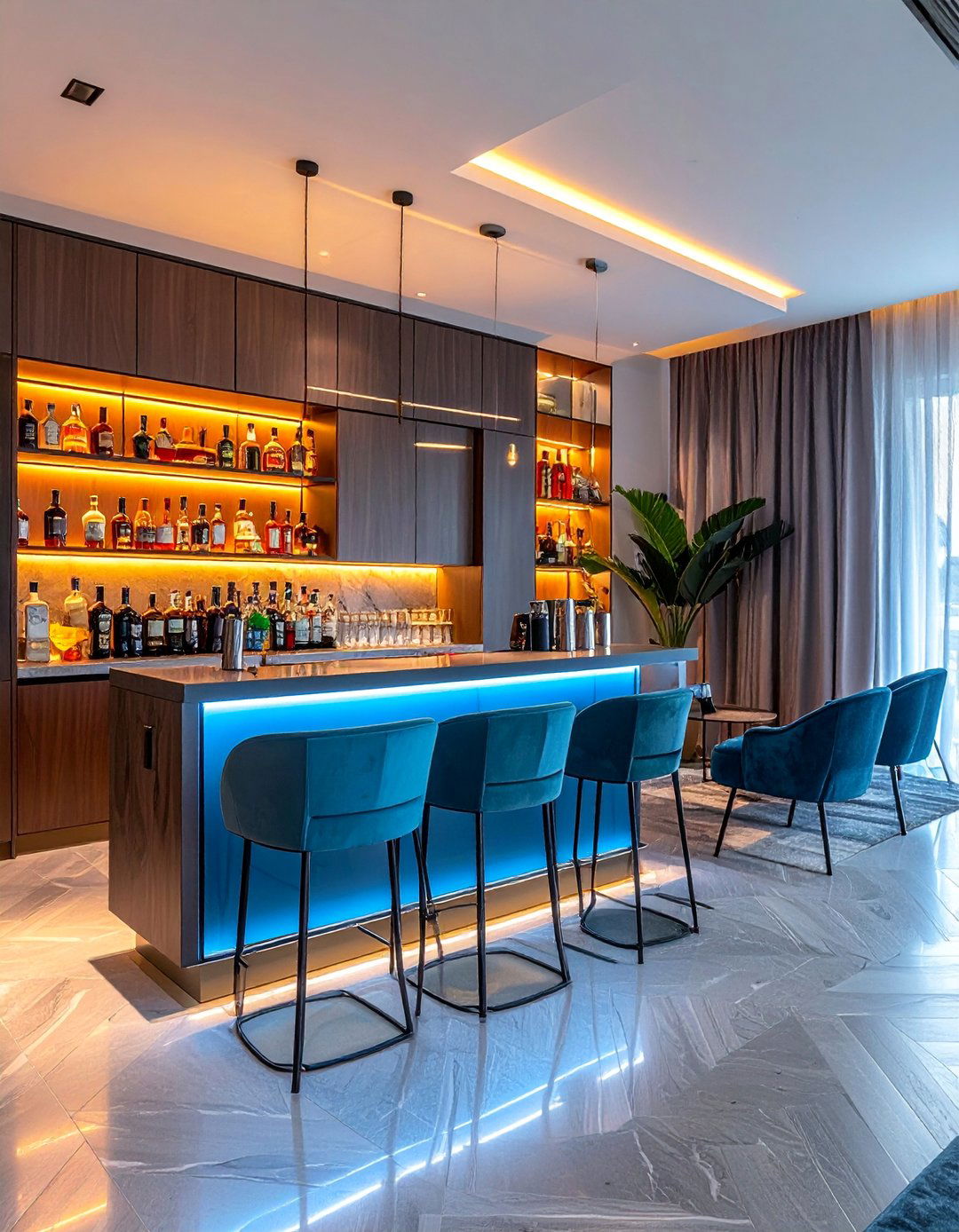
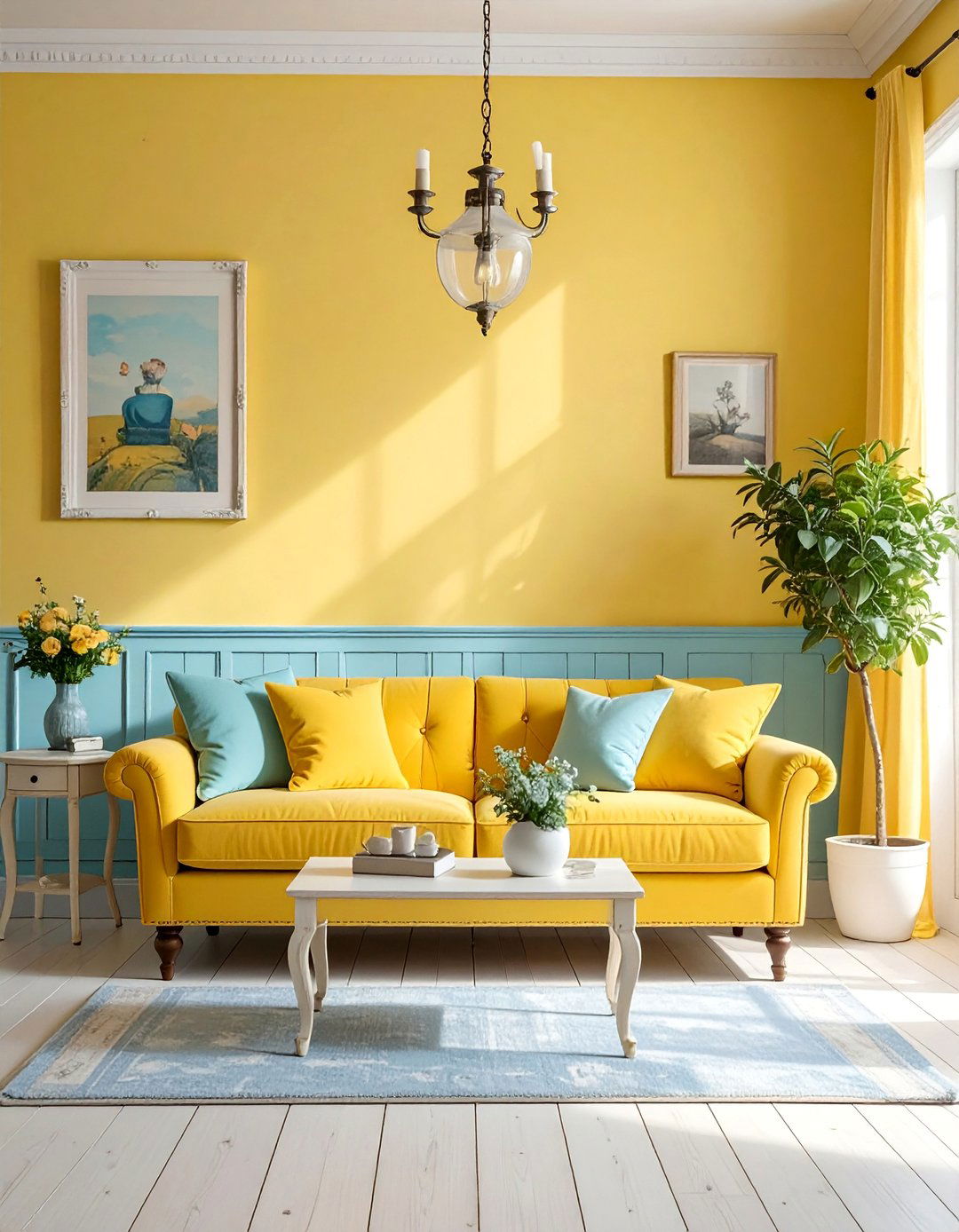
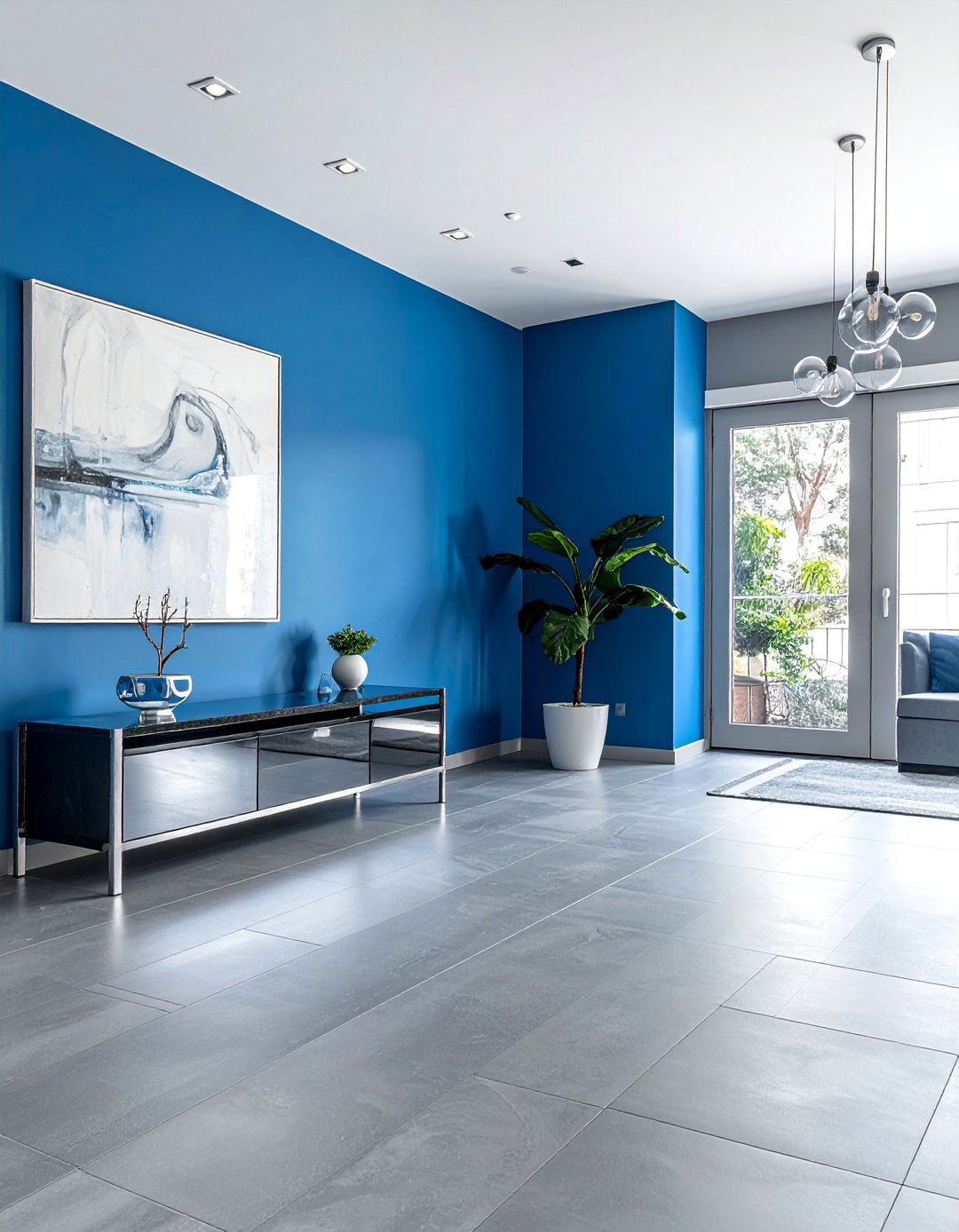
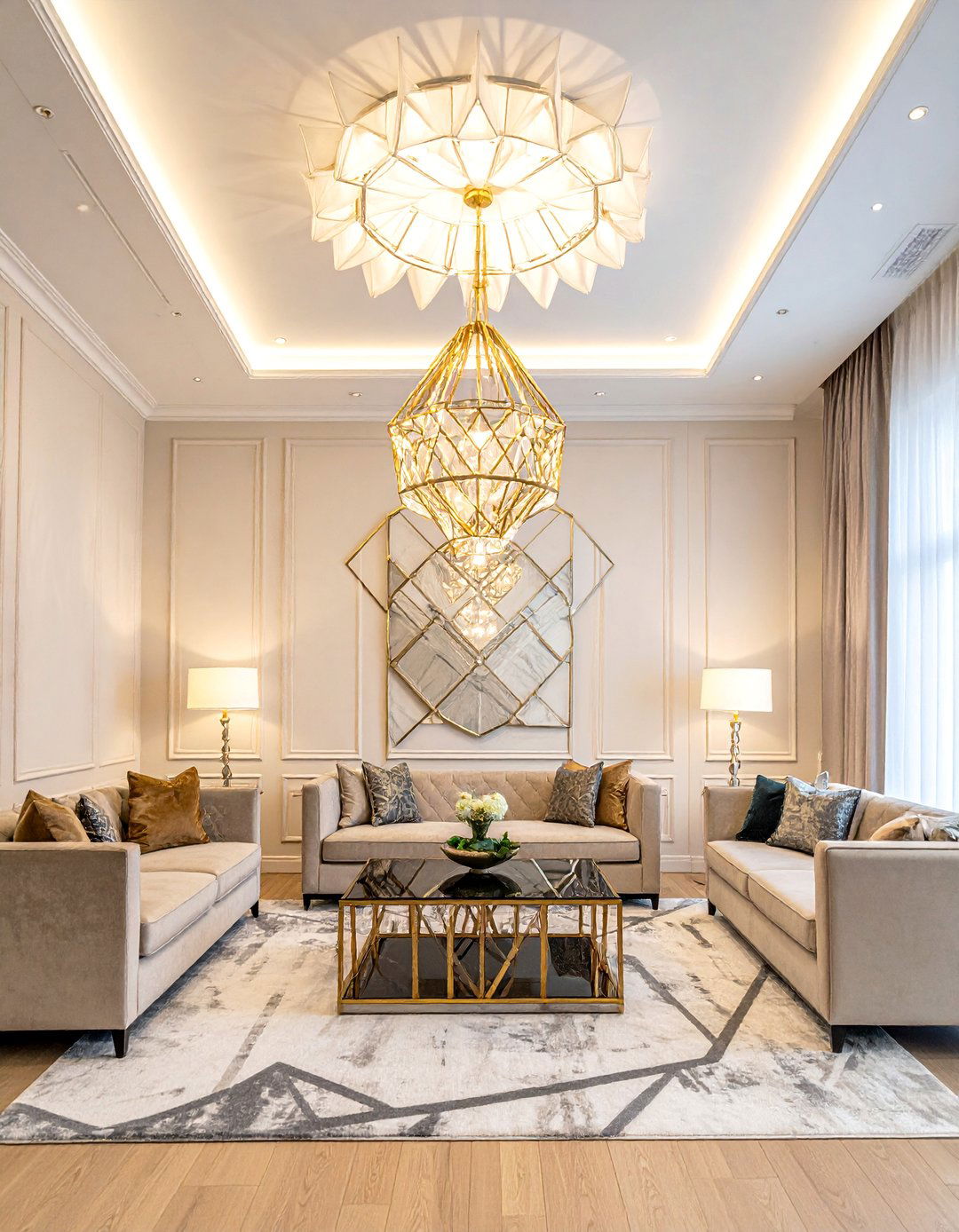
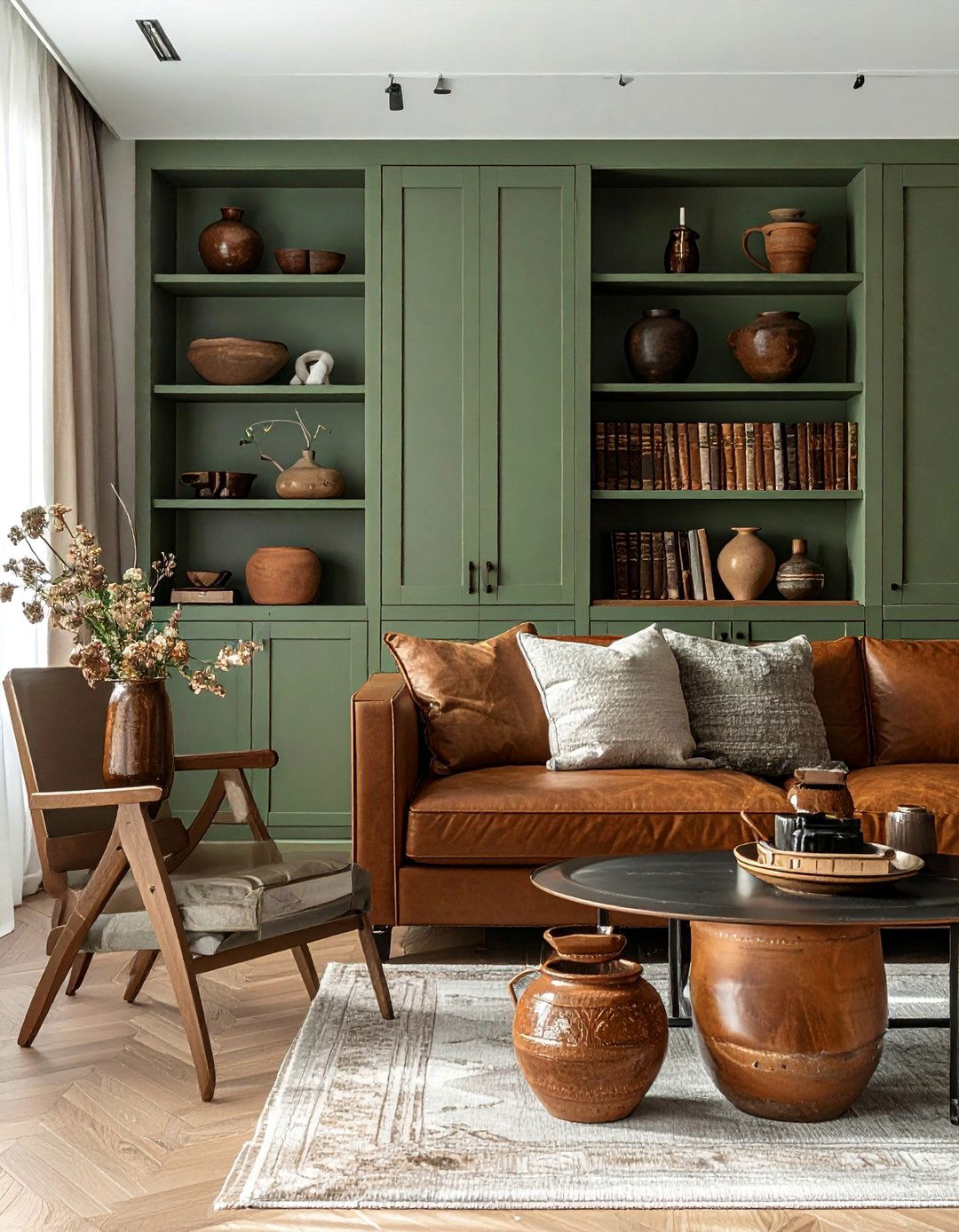
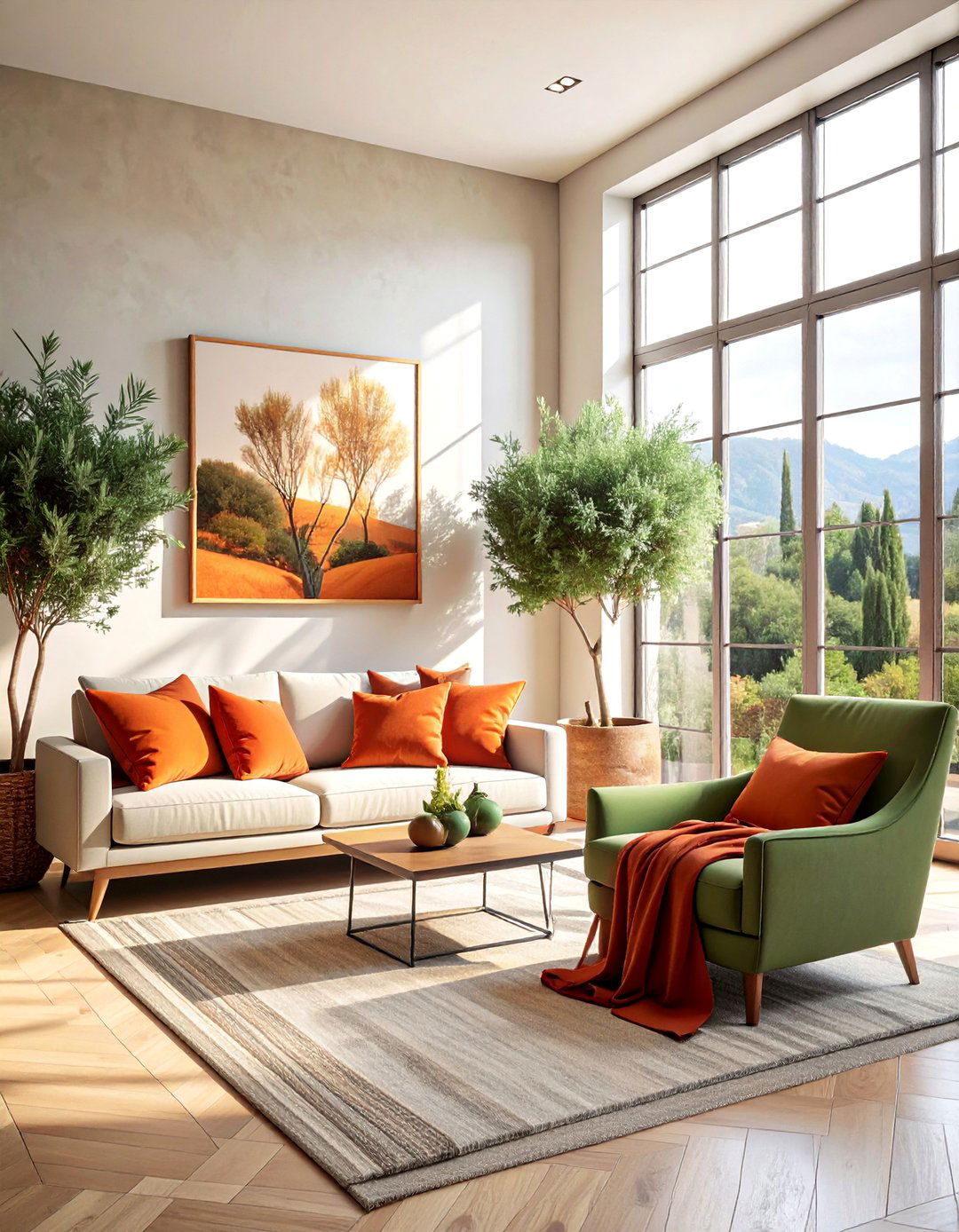
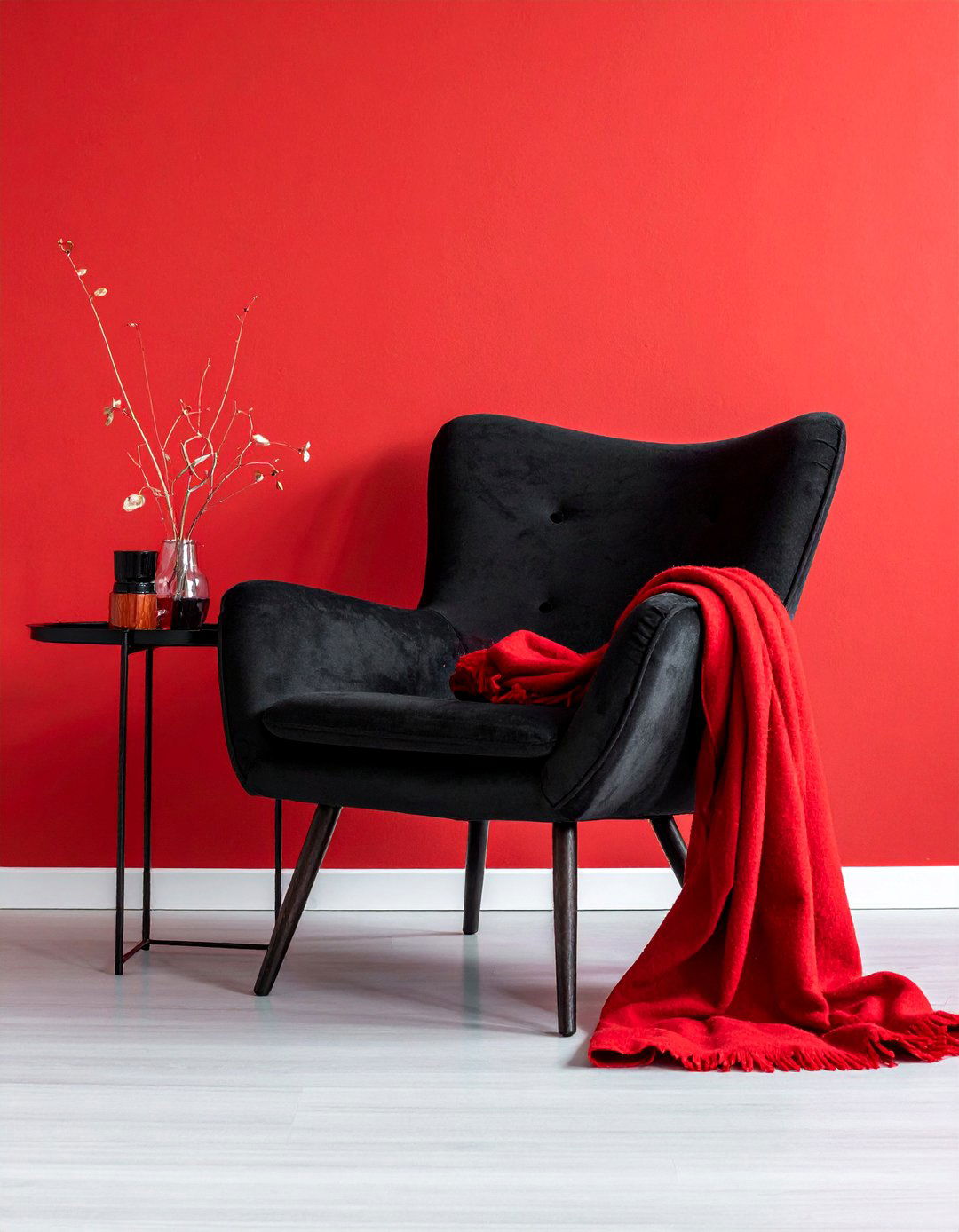
Leave a Reply